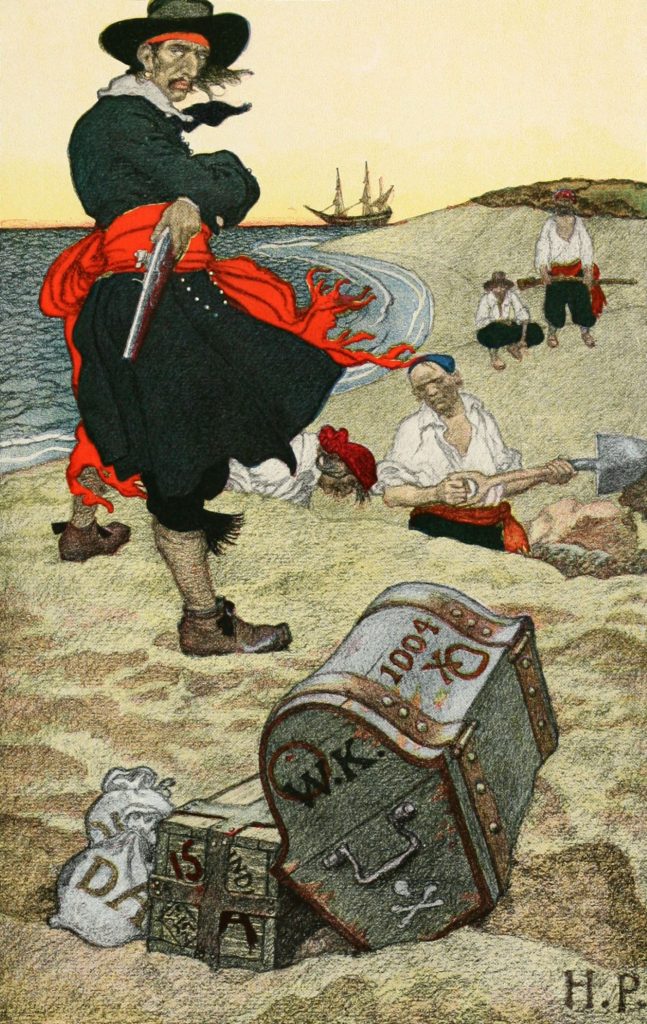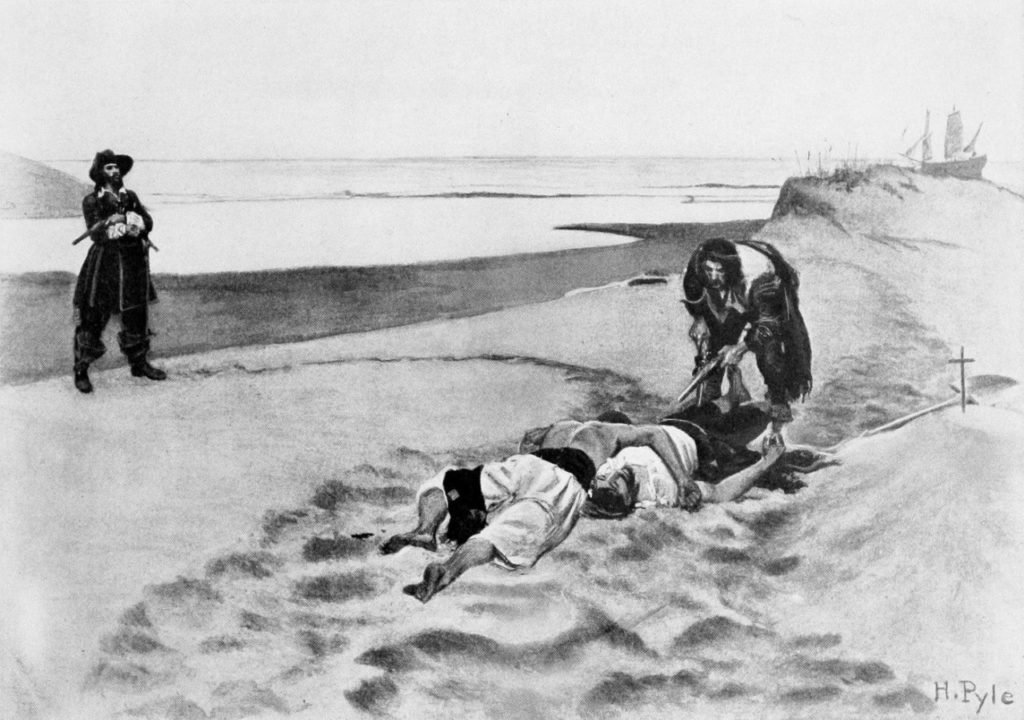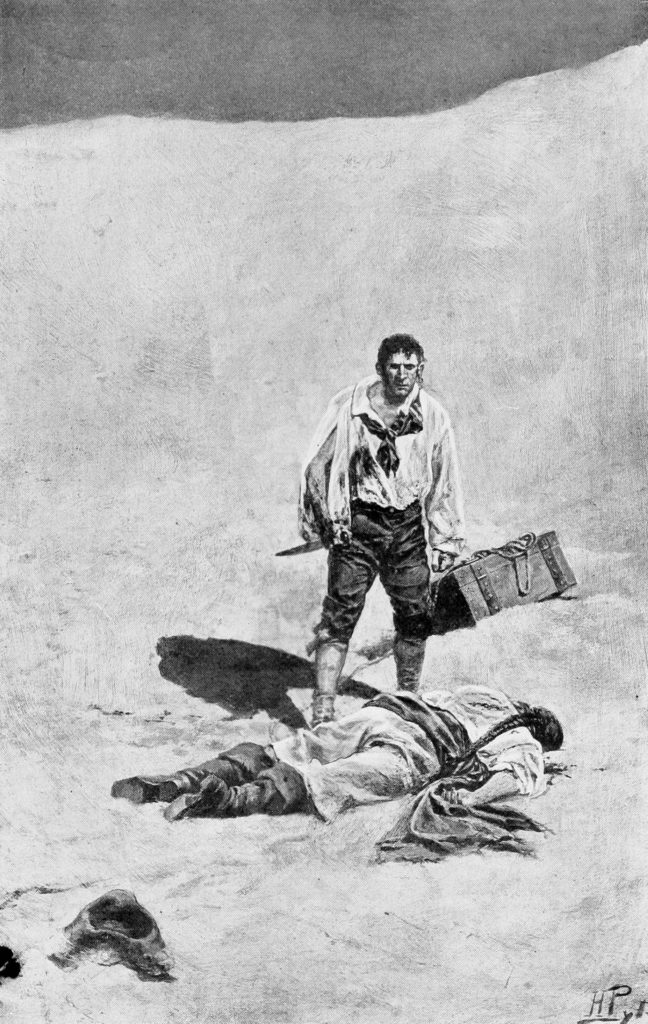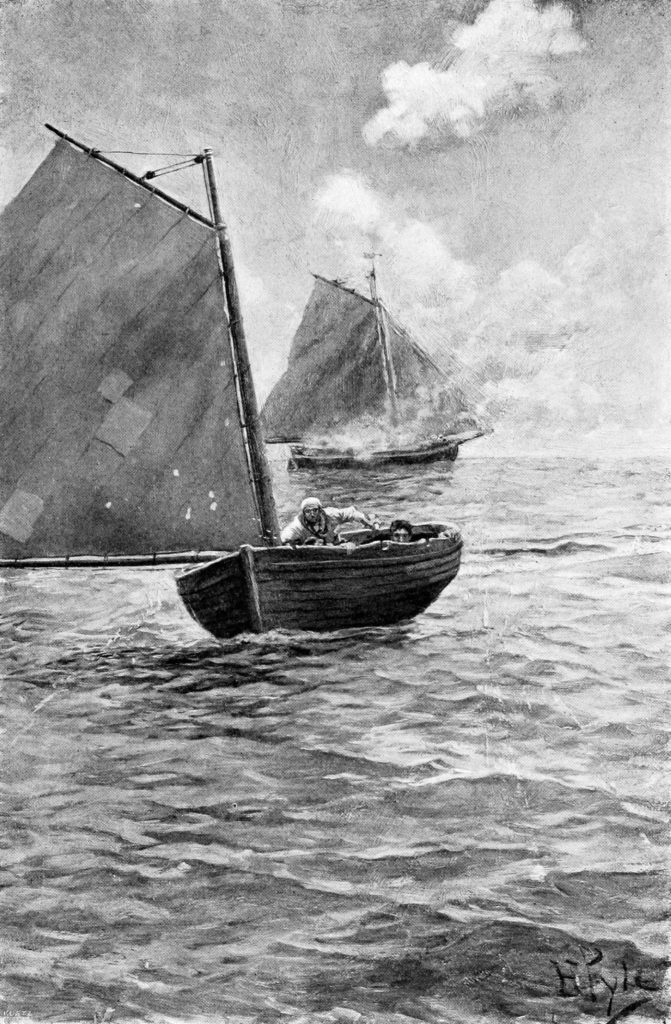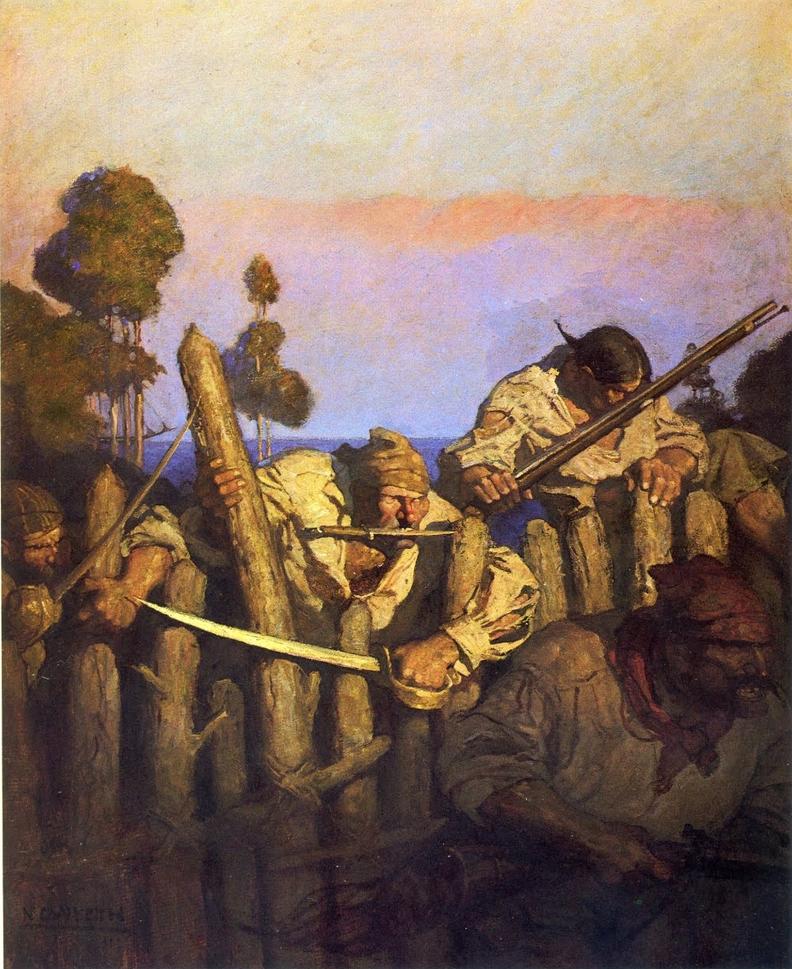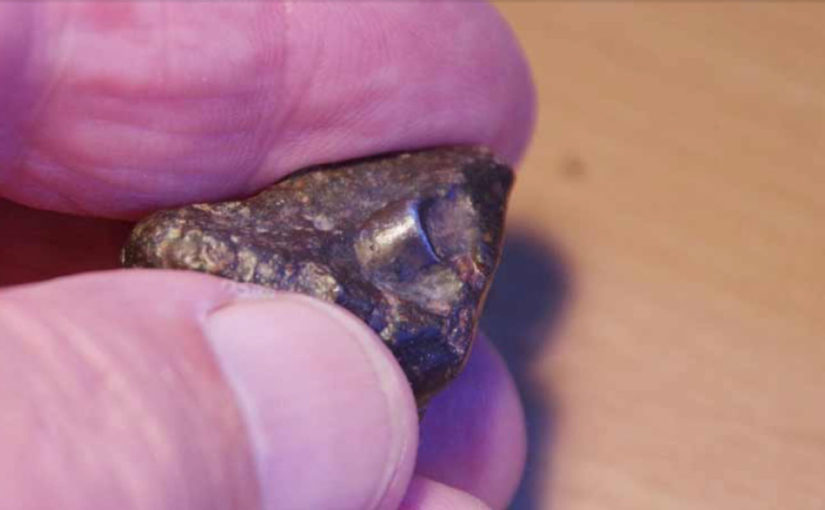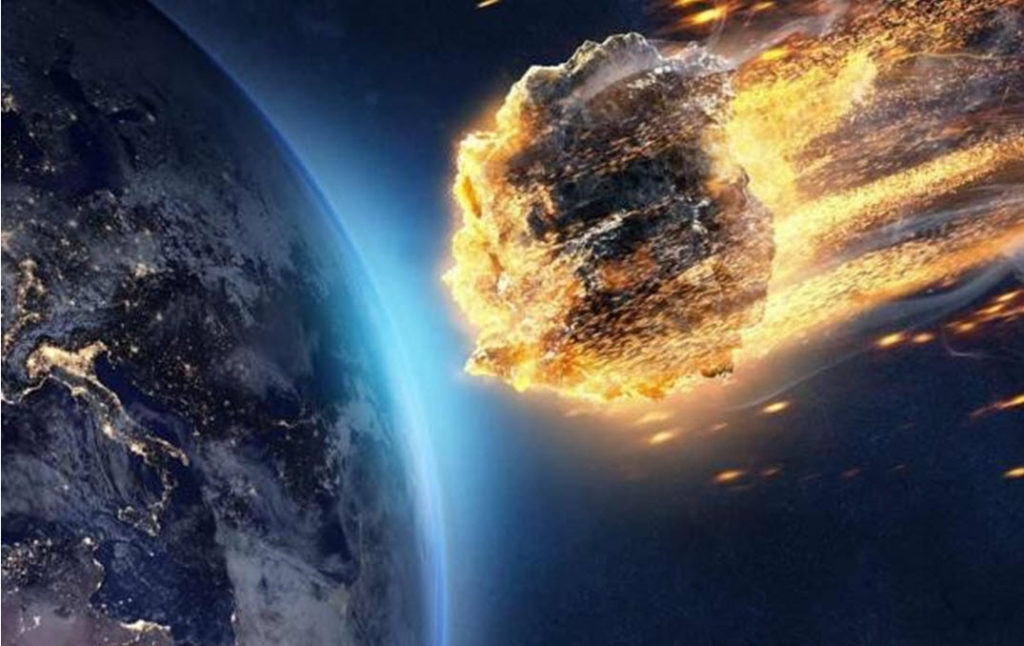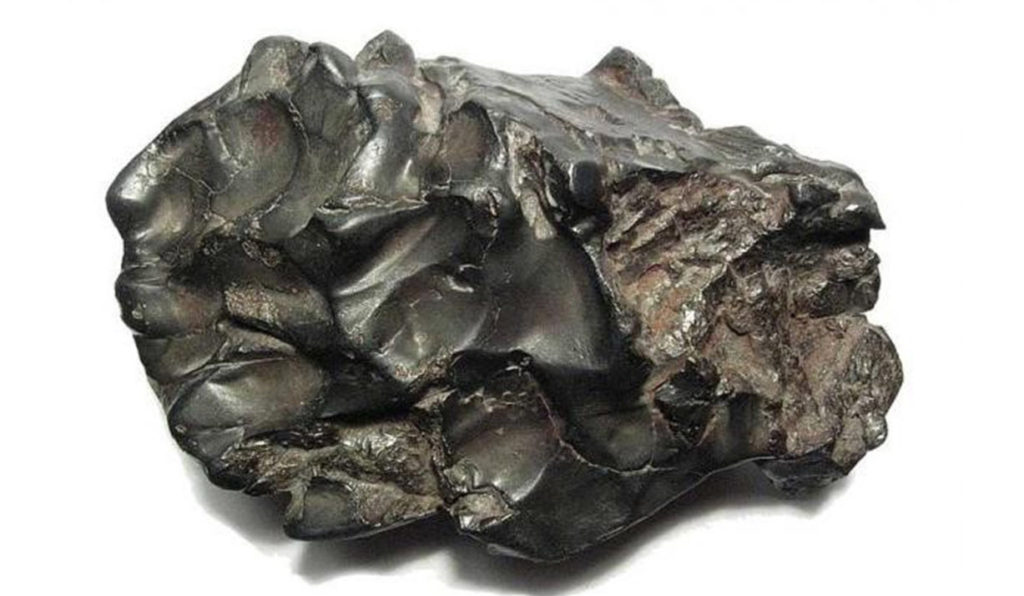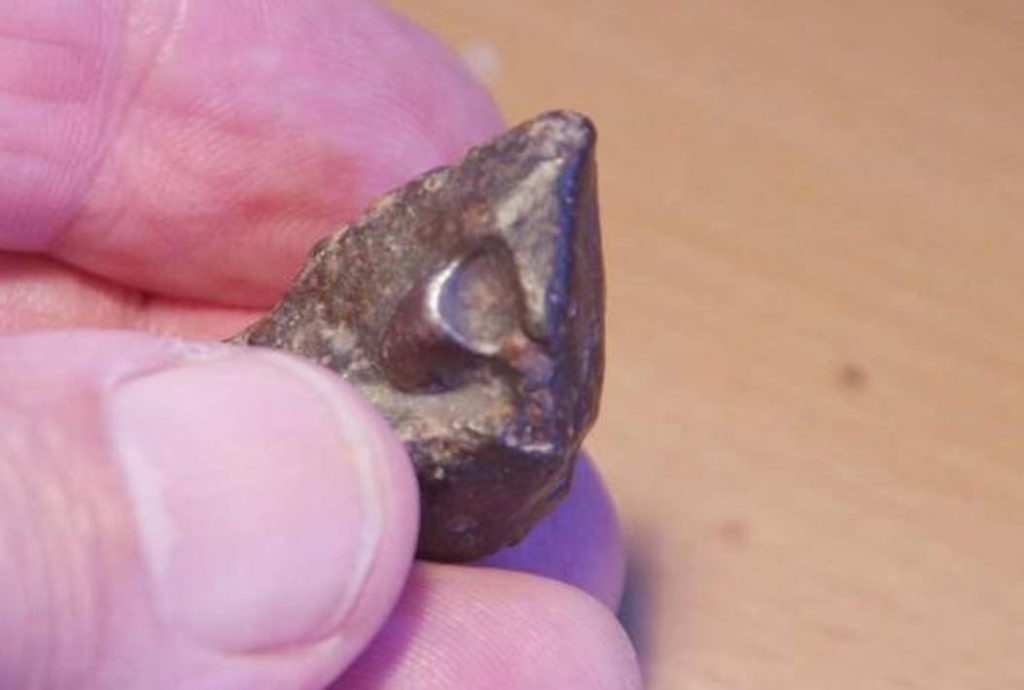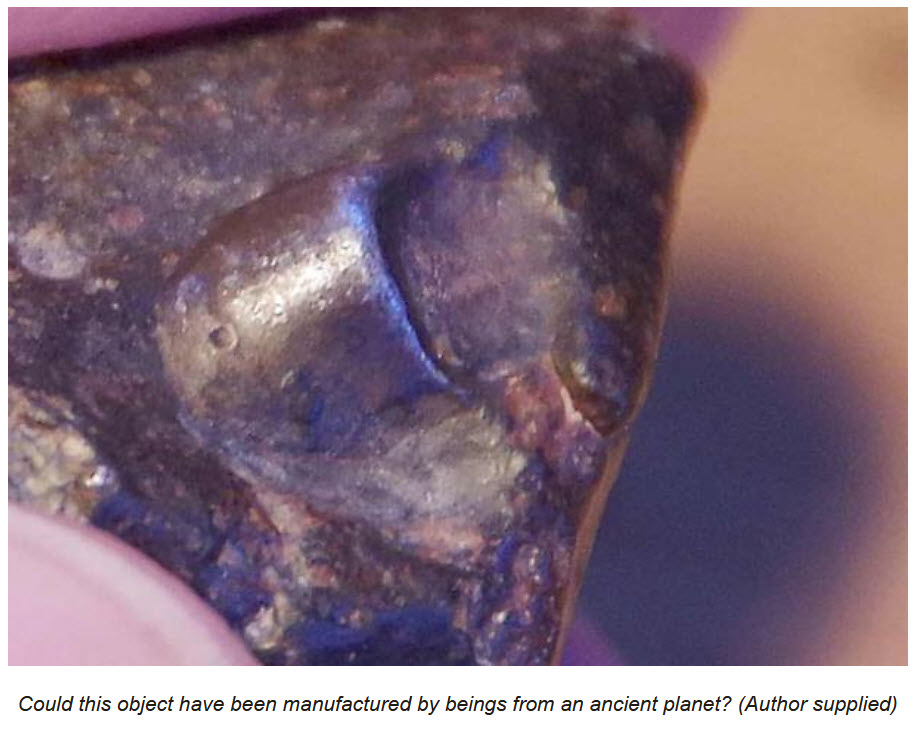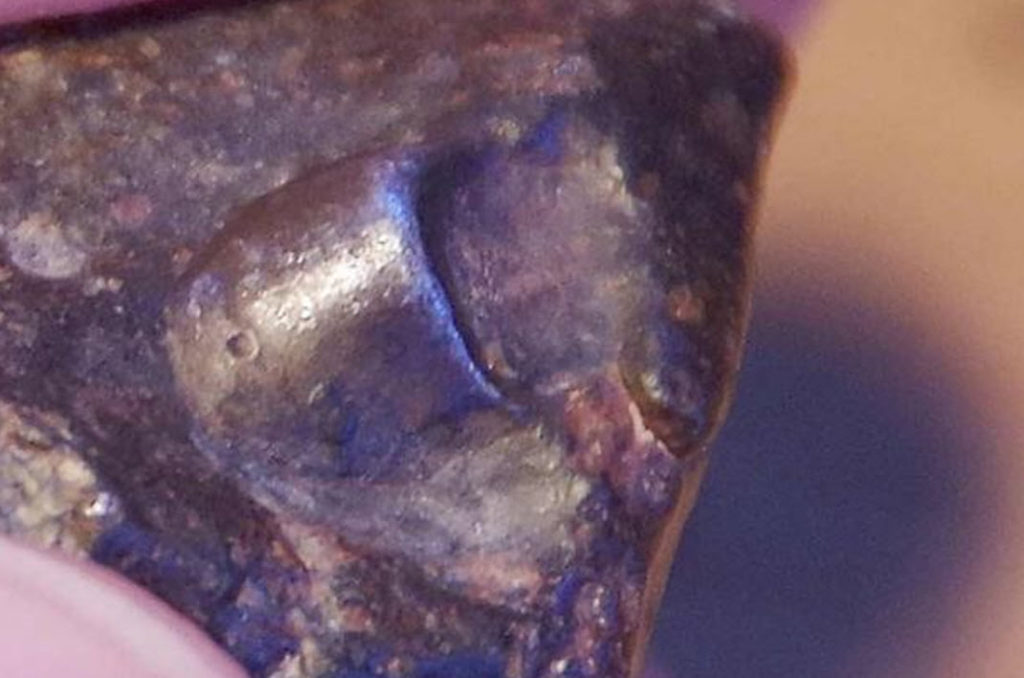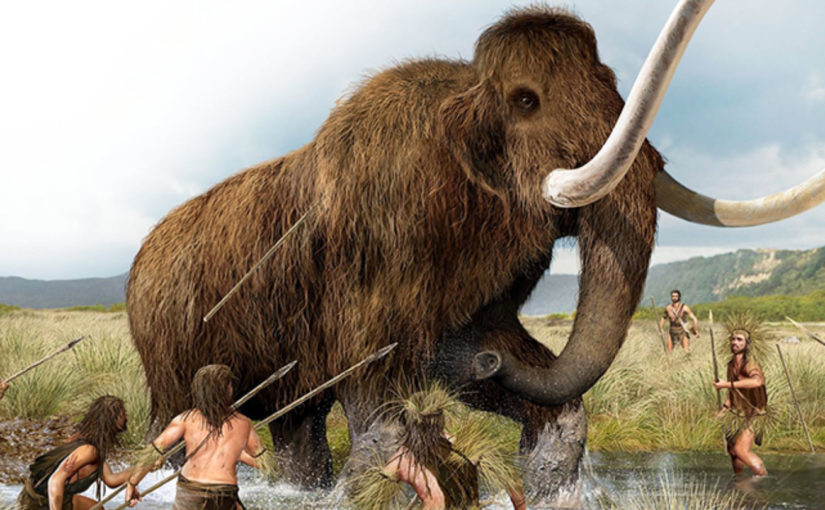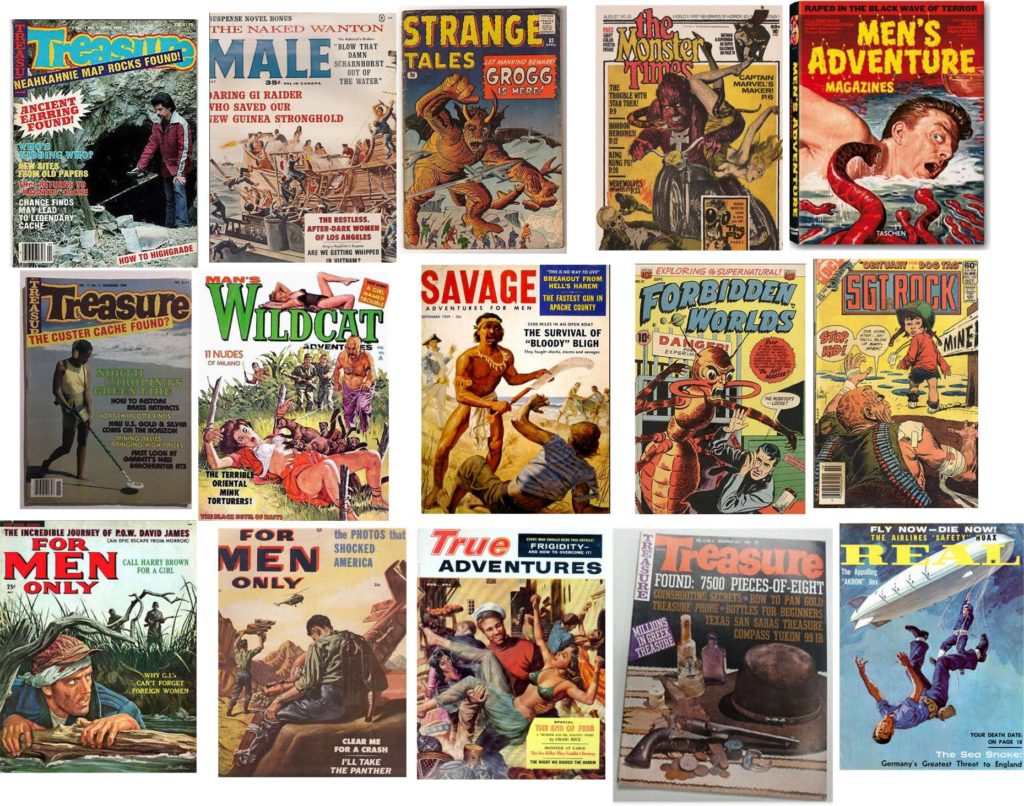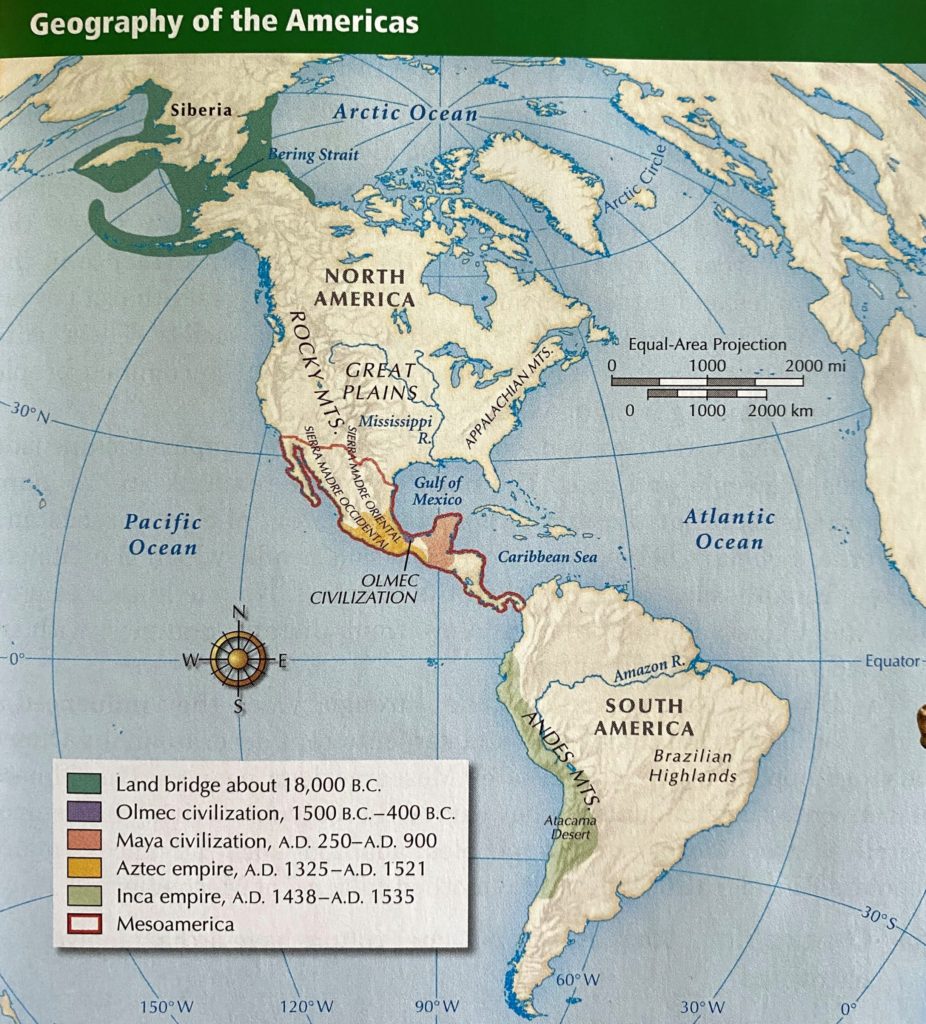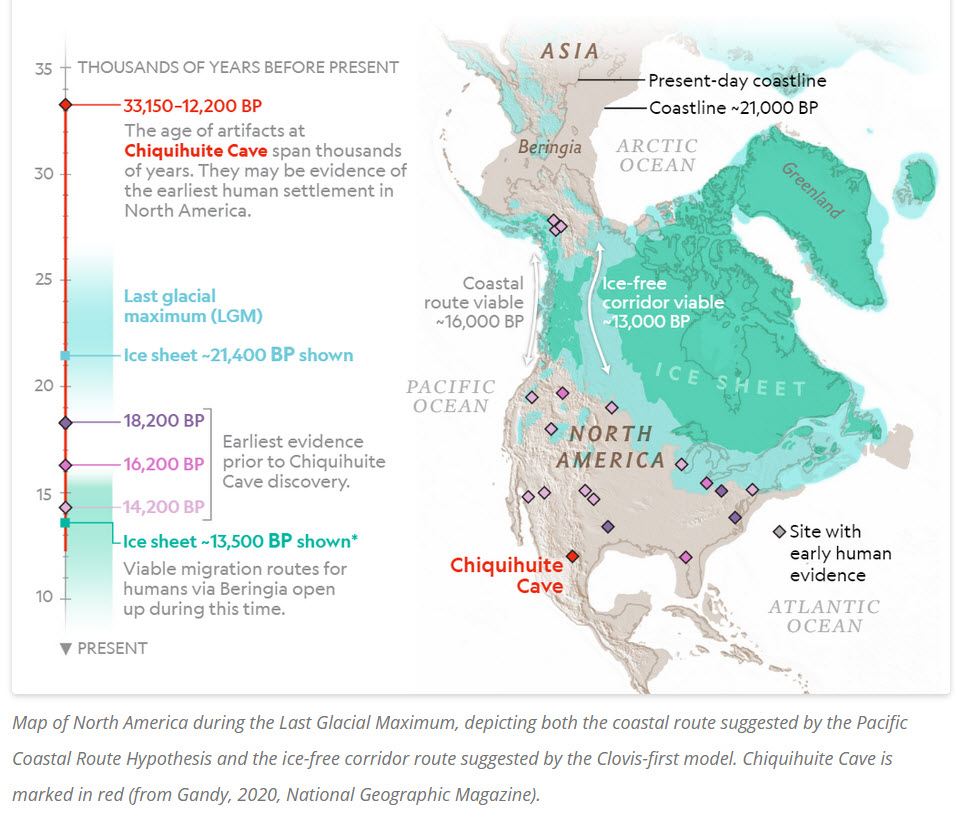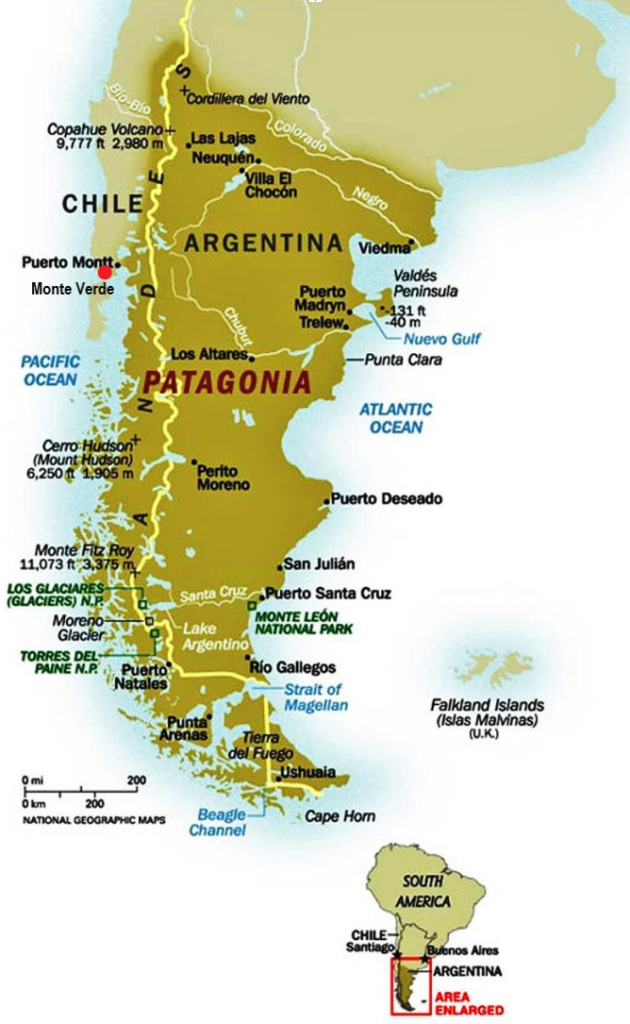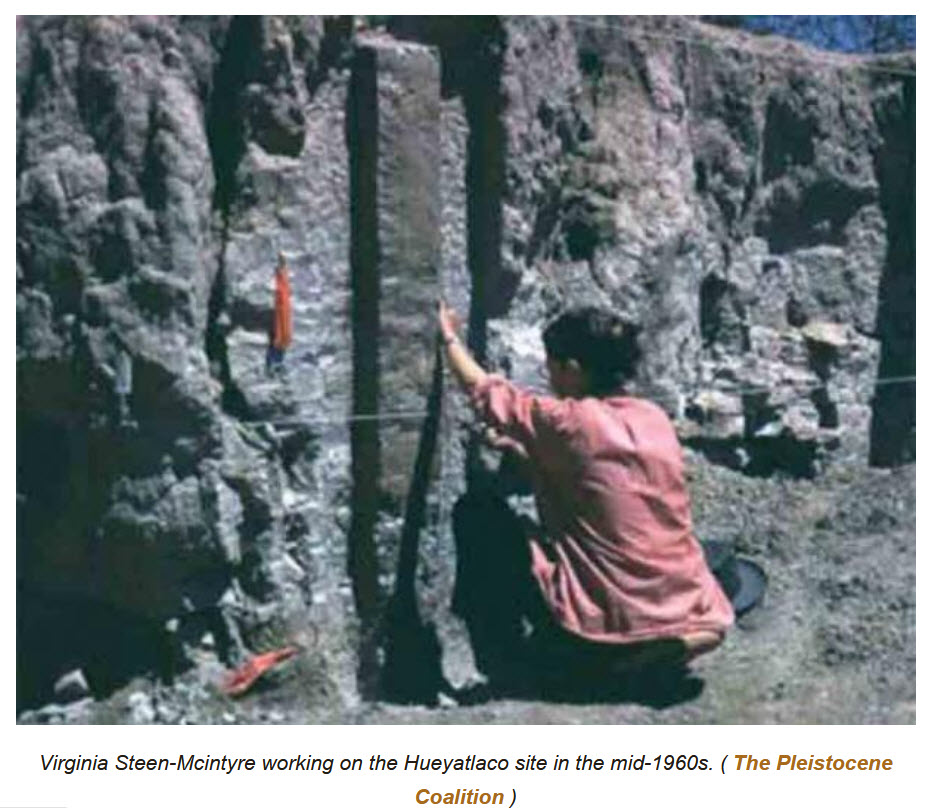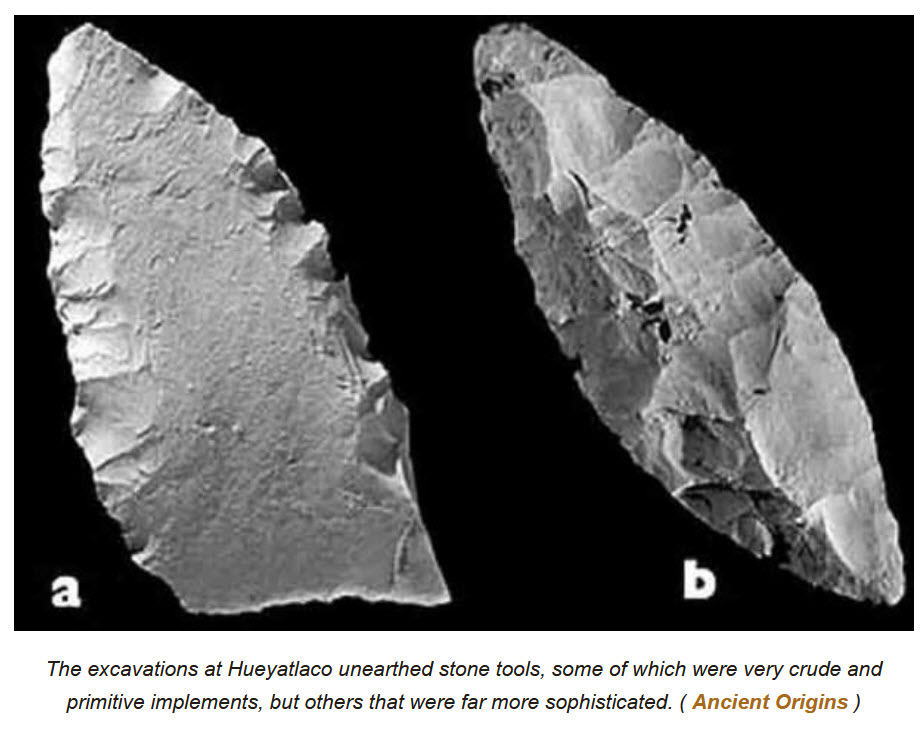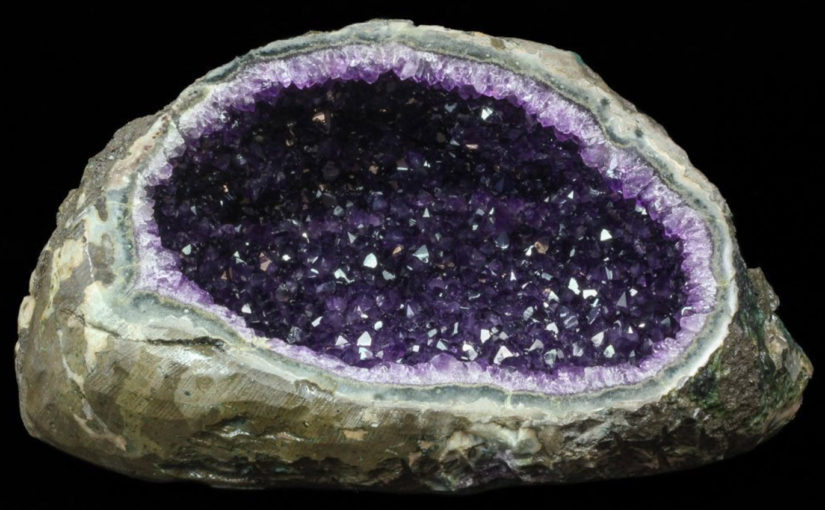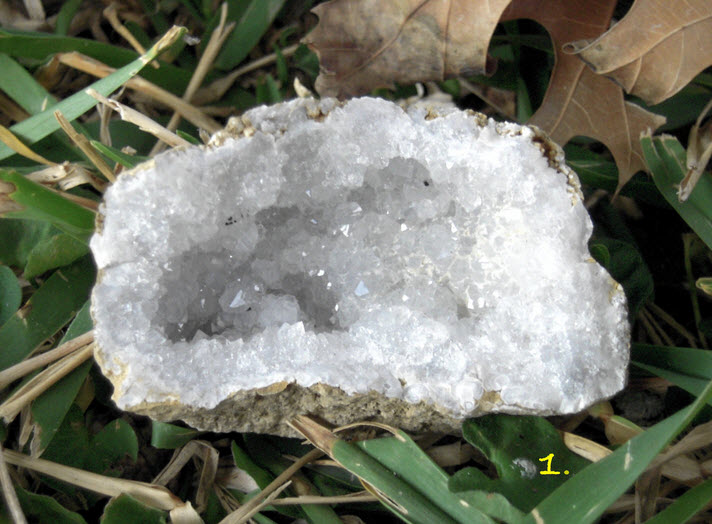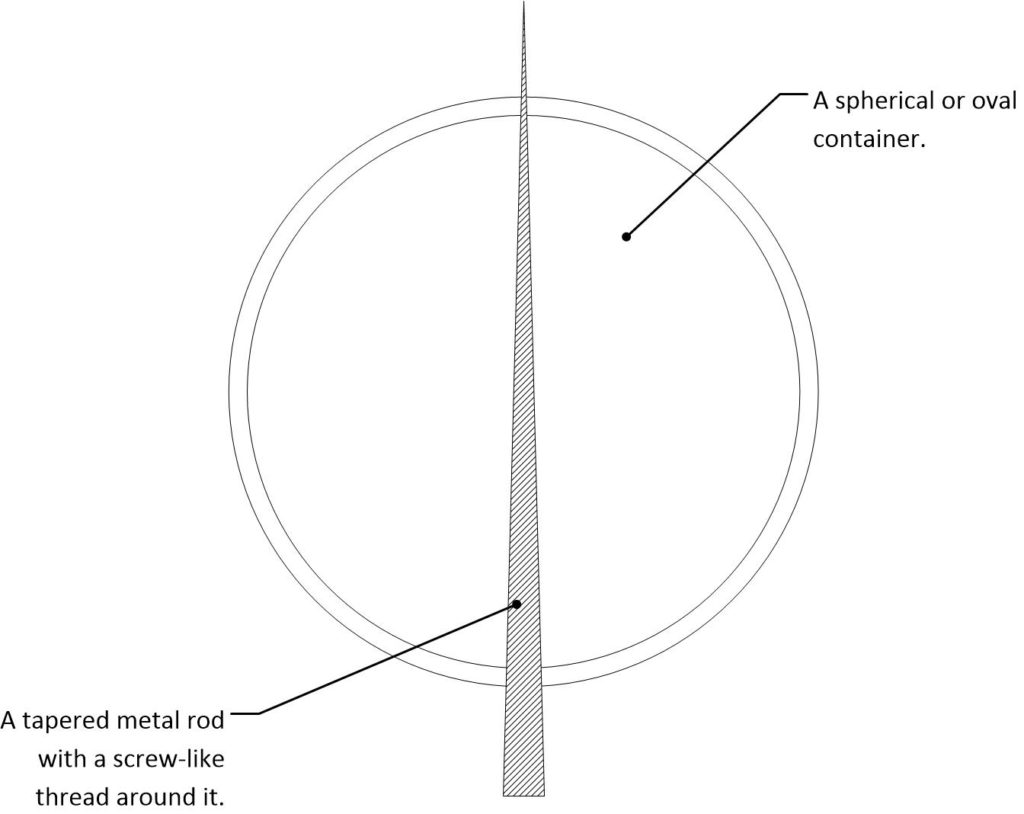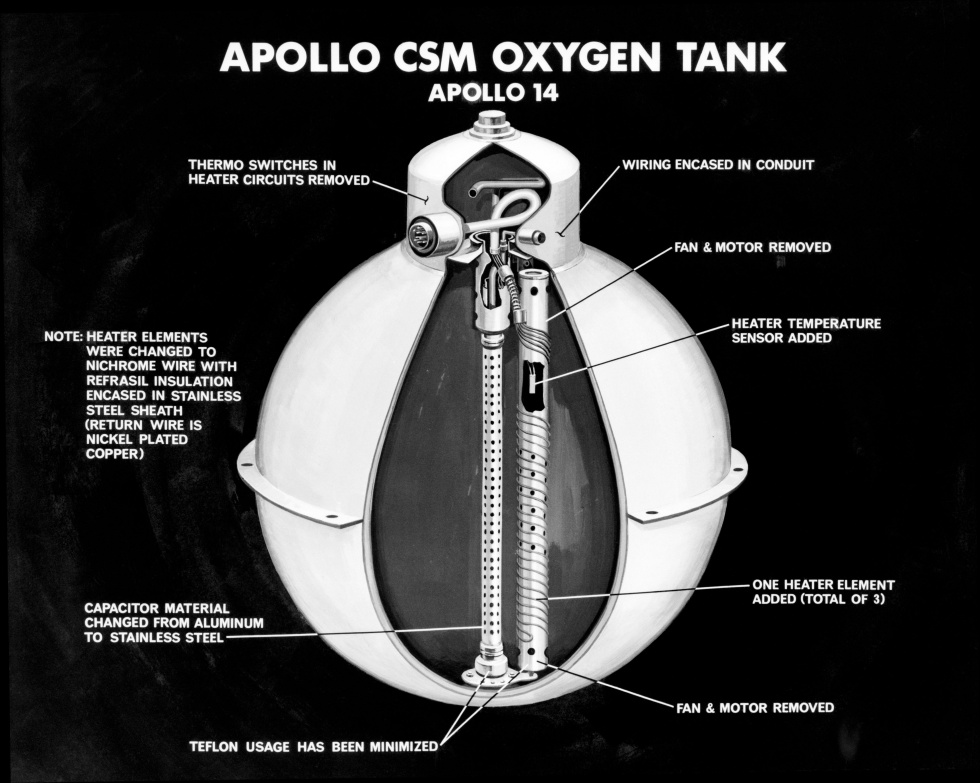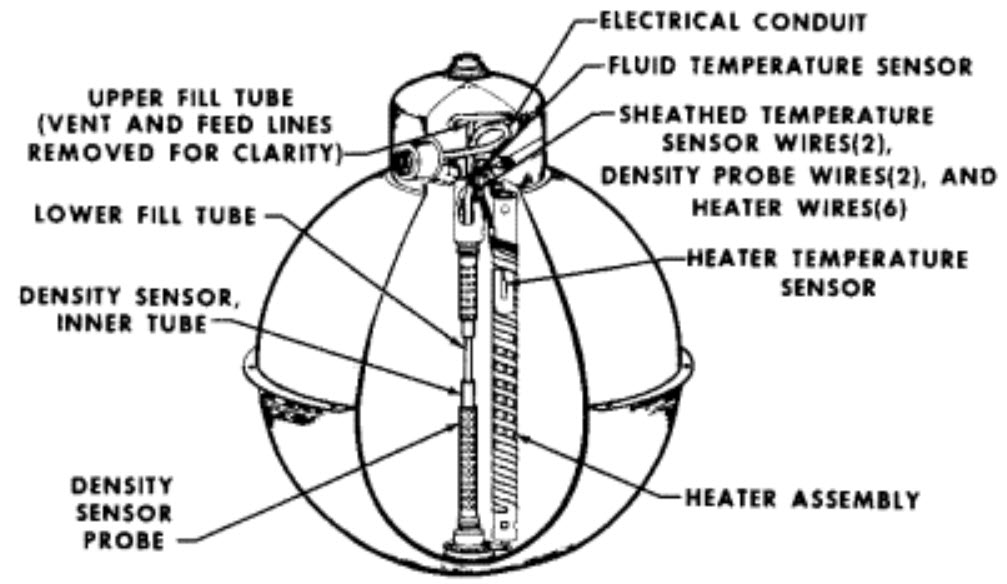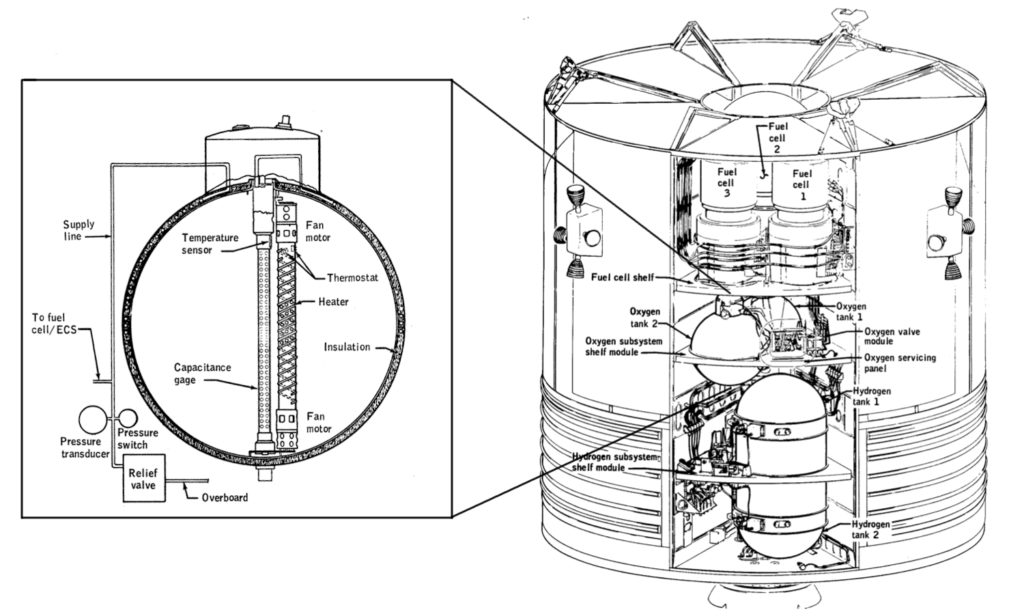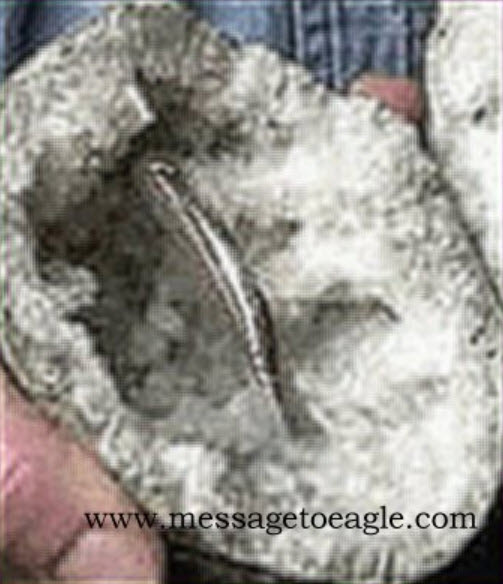The meeting at the SEO concluded, and the rest of the world are divorcing from the United States led uni-polar order. Its ENDING.
Of course, the USA is going to do everything possible to disrupt the nations of the SEO. Expect it, and the rest of the world is READY for those efforts.
Buckle up.
Why is China so angry over the UN report on Xinjiang?
I’m not sure angry is the right word.
According to the Anglo Saxon press China “furiously slammed”, “vigorously denied”, the report or “lashed out” at the UN human rights office.
But there’s nothing in the report that wasn’t alleged before. No new facts or proof were presented. And China’s response was also just the same as before: “move along please, nothing to see here”.
Of course there’ll be some diplomatic soundbites to show that they don’t agree with the findings, but angry? I don’t think anybody is really surprised by anything in the report.
I think China should react the same as the gas station attendant in one episode of Columbo. There was a scene in the episode where Columbo drives up to a gas station in his old and rusty Peugeot convertible. While the gas station attendant prepares to fill his tank Columbo tells him: “watch the paint will ya”. The attendant looks at the car and replies: “sure, will keep that in mind when I find any paint”.
Similarly China could’ve just said: “thanks for the report and sure, will keep that in mind when we find any issues”.

Treasure
I have inherited treasure. But my father is the one who actually found it.
Back around 1952, both my parents were still fairly fresh immigrants out of Poland, after WWII. In 1948, my mom, the oldest of 9 kids who survived the war, came over with her parents when she was 16 on this ship, the General A.W. Greely:
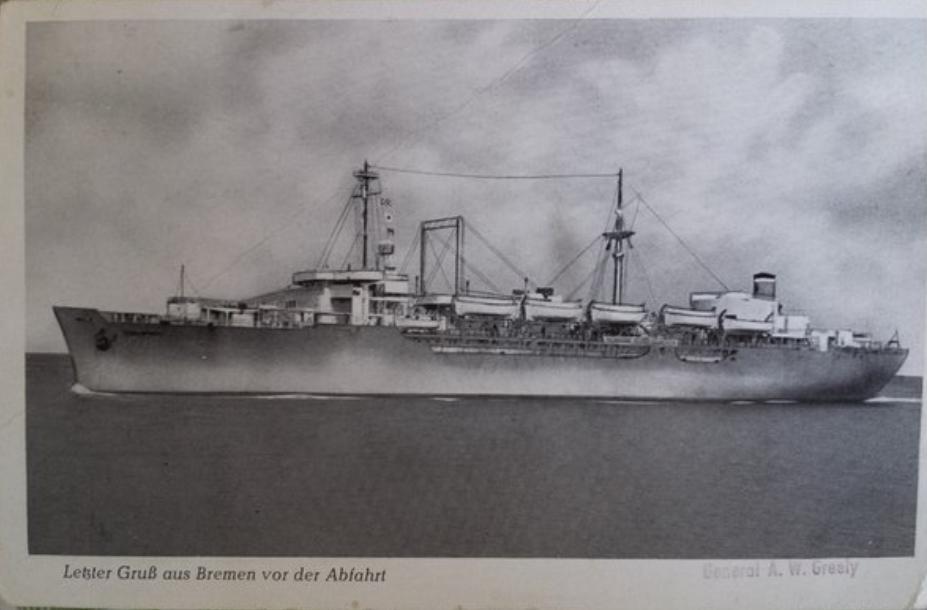
And my dad came over the same year. The 9 kids and my grandmother worked on a vegetable farm for the farmer who sponsored their immigration. They lived in this shack which physically, wasn’t tremendously different than the Nazi labor camp barracks they’d spent years in. But, of course, they weren’t slaves here! They had food. They could come and go. And nobody was beating or murdering them.

They were part of a Refugee Program for Displaced Persons. They were called DP’s. Right after the war, since they had no homes to go back to in Poland (they were destroyed [not to mention, now under communist control]), they were sponsored by a family of farmers near Buffalo, NY. The deal was, they would all live in this shack with a bunch of other families, and work all year round picking lettuce, strawberries, cucumbers. beans, and other crops, until their debt was paid off. The youngest of the kids was 2-years-old… my aunt. They all worked the fields. Their sponsor was the DeCarlo Family Farm in the town of North Collins. I have everlasting gratitude to the DeCarlos for treating my family well on that farm, as they became Americans.
My Dad and Grandfather both had jobs lined up at the local Ford plant, although they didn’t then know each other. Somehow, through some social function for immigrants, my mom and dad met and were soon married.
So, my dad was the first son-in-law. I don’t know how they did it, but within just three years, with everyone working on the farm or at the Ford plant, and having satisfied the terms of the immigrant sponsorship, both families had saved enough money to buy houses; both my grandfather and his whole family, and my newlywed Mom and Dad. That was crazy fast! But I guess with that large of a family, and everyone working, down to my 2 year-old aunt, saving pennies picking crops for three seasons added up quickly. They all had just survived the horrors of being right in the center of a World War for six years, so living in a safe peaceful place, in a shack, with the opportunity to earn money… they didn’t dawdle.
In 1951, my dad bought a really nice Victorian Era house in the Polish section of Buffalo, NY. And my grandfather bought a bigger one just down the street. So now, everyone worked just as hard cleaning up the houses, to move into. Out of these twelve people, my dad and grandfather were the only two men… the rest being my grandmother and 8 teenage girls (oh… and my 7 year-old uncle). But, of course, my dad was obliged to help out with the bigger house as well (even though he had his own house to work on).
One day, my grandfather wanted him to help clean out the 100 year old basement in the big house. This is the house as it looked in 2010. By this time, the house has gone to ruins, as you can see.

But in 1951… this was a really grand beautiful house! Built sometime in the 1860s or 1870s, or so. It still had the very old, cast iron, wood-burning, kitchen stove down in the basement. My dad wasn’t all that keen on taking several days away from his own chores, but he helped my grandfather in that basement… under one condition. He got my grandfather to promise that if they found any treasure in that old basement, they would split it 50/50. It was kind of a joke actually, and my grumpy grandfather agreed. They got to work.
Well… of course… they DID find something valuable! And it couldn’t have been more cliché. My dad was poking around on top of the basement ceiling beams, and stuffed in one dark cobwebby corner, he found… a bag of money! An old pouch, full of dozens of very old silver coins! He literally found a bag of treasure! Woohoo!
Now… as fathers and son-in-laws are apt to do… they argued. My grandfather was really pissed off that he had made that silly agreement. He had agreed because he thought that actually finding treasure was a ridiculous hope. But, there it was. One bag of treasure. Now, you have to remember how important money was to these guys. It meant everything, as they’d never had it before; and what they did finally have, came from back-breaking double shifts, for years.
Of course, my grandfather had to abide by the agreement, and each of them took possession of a couple dozen coins, mostly 19th century silver dollars. They had no idea, what was what, so it was a simple matter of… “one for you… one for me… one for you… etc.”
Now, we move forward 18 years. My two sisters and I have by this time been born. I was 6 and my sisters were teenagers. The two families had by this time grown to about nine families, as all the kids grew up and got married off. My mom & dad, and my grandparents continued their hard-working, over-time, penny-pinching ways, during that whole time, and by the late 1960s, they both had saved up enough cash to take the next step in the American Dream. Moving out of the city, and getting a place in the country. In fact, building their own homes. By 1969, both my parents, and my grandparents had built their new beautiful modern houses in the small rural town of Eden, NY. Red-brick ranch style houses with an acre of land each. Fields and forest all around.

That’s our house in the center, and the surrounding countryside. It’s where I grew up. Those forests are where I became a country boy, forever exploring, for miles & miles in every direction. I am eternally thankful for the hard work and sacrifices my parents undertook to provide me and my sisters an incredibly great place to grow up. My grandparents and us built our houses right across the street from each other.
A few years later… I think I was maybe eleven years old, or so… the story of the buried treasure came out. Of course, I wanted to hear all about it! And my dad was happy to finally tell it, as it was one of his greatest moments of “getting” his father-in-law in a “Gotcha!” They had a constant bitter-sweet relationship, for the last twenty years, always trying to out-do each other. It was often at the level of sit-com absurdity. So… we all heard the story at the dinner table that night. And obviously…. WANTED TO SEE IT!
Dad went to his secret hiding spot, and pulled out a cloth pouch of silver coins, and carefully spread them out on the table. Treasure! My eyes couldn’t get wider. Dad talked about his score, and that my grandparents had the other half. They were always meant to hand down to everyone’s kids. But, you see… my grandfather had to split his share amongst all his kids… who each had a pile of kids. So grandma would give them out at special occasions, to my aunts, uncles, and cousins. My dad, on the other hand, only had my two sisters and I to split them up with, so we clearly had the better situation. I don’t recall if my sisters were as eager as I was at the time, but as far as I was concerned… LET THE SPLITTING UP AND HANDING DOWN BEGIN! It’s TREASURE! Heck, yeah!
It’s clear that my dad was prepared to do so, or he would never have brought them out of hiding in the first place. But… to my dismay… we weren’t then getting our full shares. Just one a piece. My disappointment lasted about three seconds, as I got my first share of inheritance, at 11 years old. We got our own old silver coin, and we each eventually put them in our own secret spots. Apparently, not a single one of us knew a single thing about coin collecting. We just all saw they were old, from the 1800’s.
A couple or three more years went buy, and I eventually started looking into actual coin collecting. I bought a book. Strange that no one else had though to do that yet, but I asked my dad if I could see the remaining coins so I could look them up. He allowed me to do that. This is when I discovered that, for the most part, they were Morgan Silver Dollars. 1878 to 1904. I started to read about and understand what mint marks were all about, and learned that age wasn’t the only thing that mattered. There was mint mark and condition, too. Obvious now, but I knew nothing about this stuff before. Clearly, of most import, was the coin that I had as my own. I checked it out and found out that it was worth some $40 or so. Mine was one of the oldest. I believe it was an 1879 coin. I went through the whole pile, one by one. So I was seeing something like “$18… $20… $8… $75 (ooo!)… $20… $85 (!!!) … $8… $20… $2000 … wait, what?! $2000??!!! WOW!!!
One of the coins had the date of 1889 on the front:

And more importantly… it had a “CC” mint mark, for Carson City, Nevada, on the back! (at the bottom, above the “DO” of Dollar.

Holy crap! Being the burgeoning entrepreneur that I was, I immediately asked my dad if I could trade my coin for one of the others. Why? Well, I told him straight up… because it was worth more. He said fine. So… I swapped mine for the CC coin and gave the rest back. Hey… if my sisters had taken the time to read about coin collecting, they could have made the discovery themselves. But they didn’t. So my conscience was clear. My swapped coin went back to my secret hiding spot.
Life went on. We all grew up. Had our traveling, our colleges, our marriages (my divorce), kids, etc.
Close to thirty years passed and I found myself in Arizona, doing wildlife work. I was still kind of emotionally recovering from my marriage debacle in England less than a couple years earlier. And financially recovering. I was all-in on my field studies for various agencies and wildlife groups, getting a lot of great science done. It was just what I needed, as my head wasn’t yet in the game enough to commit myself back to my Engineering career. Unfortunately, half my work was volunteer work (which would pay off later), and the other half was the piddly amount that was usually available in research budgets, for paid field researchers. Emotionally, mentally, I was doing great.
Financially… not so much.
There was a lot of touch & go during those times, trying to make up enough cash to pay basic rent on my 3-room apartment in the “interesting” part of Tucson. Trying to scrape up enough for basic utilities. I cut back on food and went back to my $1/a day/plan that I had developed when I had gotten out of the Army and took on a beach lifeguard job in Florida, almost 20 years earlier. In case you don’t know… beach lifeguards don’t make a whole lot of money. It’s all about the benefits!
So, there I was… starting to love life again, but seriously strained for cash. I kept up selling things and found various ways to get a little here or a little there. But… the time finally came when I simply ran out of resources.
Of course… my coin had already been in the back of my mind for a few months. I really couldn’t consider it, though. I just couldn’t. …. Until I just had to. Okay… my most treasured family heirloom just had to be sacrificed. I was committed. I checked out values again, and noticed it hadn’t changed much. With a liberal estimate of “condition”… I still thought I might be able to get $2000 for it. So… not having internet… I started out to locate every coin buyer, numismatist, collector, and pawn shop I could find. I started making my rounds.
It didn’t start out very well, as I continued to get low-balled on my 1889 CC Morgan Silver Dollar. I was getting offers in the several hundreds, and not even near the $2000 I was holding fast to. I simply could not allow myself to take a desperate price for something that was so valuable to me in every other way.
After a couple of days of this, I found myself having just walked out of another collector’s shop, having been offered $800. Things were looking bleak. I was sitting in my Jeep, clueless, when my phone rang. It was one of the shops I visited the day before.
I guess he thought I would come back for his low-ball. Who knows… in another couple minutes, I may have! But, he said to come on back, and he would give me my $2000 for this coin that we both knew was pretty damn rare! HOLY COW!!! I tried not to act too excited, but I was back there within 15 minutes, and we made the exchange. Wow! I wasn’t going to be homeless after-all! I can’t express how difficult it was to hand over that coin, but I just was at a point of zero options.
So… with the economical way I was living, that was giving me a good three months of breathing room. I could certainly improve my position within three months. And I did.
However… that’s not the end of the story. At that point, Morgans were relatively rare, all over. And that was certainly the case for the really special ones. But fate took a very strange turn just a few weeks after i sold that coin. Turns out that the coin collecting world… at least the Morgan Silver Dollar collecting world… was turned upside down on its head, when an enormous stash of these very coins was found, someplace in America! Like … thousands of them suddenly turned up in the market, and their value steeply plummeted! My $2000 coin took a huge hit and lost well over $1000 in value. If I had waited just another couple weeks, things would have turned out far differently for me that summer in Tucson. Far differently.
I do feel for the unfortunate turn of events for that coin shop that took such a massive loss on his investment. But… what can I say? Collecting is always associated with risk. I got lucky. The coin shop didn’t.
In retrospect, I still see that I had no other options.
Still not the end. Years later, my dad was nearing the end and I was his 24/7 hospice keeper for his final few months. Those coins that he still had, had been given out here and there over the years. But there were still quite a few left. None were ever as valuable as my CC. But, they weren’t worthless, even after the Morgan Crash. So, he gave me the rest of them. I still have heirlooms. Not nearly as valuable, in one sense. But incredibly valuable in another. They are now in my secret hiding spot. And when the time comes… they will be handed down.
They are after all… real and true, found hidden treasure.
A “house cleaning” / purge of DDP membership is taking place
The DDP is the “independence for Taiwan” political party that currently rules Taiwan and is trying hard to work with the United States. I recon that United States pressures, and Chinese pressures are causing a severe rift in the political party leadership. Yet, I do now know what will come of this.
I do not know if the purges will cause the party to lean towards China or strengthen their ties with the United States.
Given what I know we can say the following are true…
- The USA has ramped up an anti-China effort around Taiwan.
- The USA is tossing about the Taiwan Act of 2022.
- China has reacted VERY STRONGLY regarding it.
And now this…
The taiwan ruling party DPP expelled 26 party members who had left the party or violated discipline to run for municipal councillors, including Zheng Baoqing, who was registered to run for mayor of Taoyuan. You Yinglong, chairman of the Taiwan Public Opinion Foundation, said that the Democratic Progressive Party confiscated the primary election, and factions within the party arranged the right to nominate city councillors, leaving many talents with no way to participate, resulting in behaviors that violate discipline or leave the party to run for elections. If the party led by President Tsai Ing-wen still does not know how to introspect and review, will there be tomorrow?
From HERE
What is it like to be discreetly wealthy?
I met an old entrepreneur that had several successful companies. He made millions and stills owns a lot of businesses. He doesn’t brag about the money, he speaks about the people he met (he quoted Steve Jobs) and share knowledge.
When he offered to pay our breakfast (50$ in Paris) he joked about being older and richer than me to not split the bill. He paid with a classic gold mastercard. Not a black card, not a centurion, a simple gold card.
We got out of the brasserie, and was I amazed by my scooter: a small electric Cityscoot moto that any one can rent for 0.2€ per minute in Paris

When he headed to his office, he went on foot. Not in a uber or expensive car. On foot. He has time, the most valuable thing in the world.
Being discreet wealthy is being able to pay things without showing off and to spend time instead of money.
Black (Live) – MTV Unplugged – Pearl Jam
Europeans talk about their visits to the United States
Here’s the answers.
Answer 1
There were only two things that shocked me when I came to the US.
- the complete lack of maintenance for the infrastructure. I thought Americans loved to drive? So why not spend some money on maintenance. I’ve seen more potholes in 6 days in the USA, than in my entire life in the Netherlands
- the way police officers and other other uniformed people behaved. It already started on the airport at border security, all of the guys in uniform acted like they were the most important person in the world and we were just measly worms. Come on, I know you have a job to do, but why can’t you just try to be pollite? If Dutch police officers would behave like that, they would be considered unfit for the job.
Answer 2
Sort of, yes.
The roads, first of all. They were exactly like the horror stories people used to tell from East Germany, pot holes in the highways and no maintenance for decades.
Then, the cheap stuff. The really cheap stuff in shops. All of so low quality that it would be illegal to sell in Europe.
And after a while, the widespread sheer squalor. I had expected the US to be much like Europe in terms of general standard of living, but it’s actually closer to North Africa, with actual slum areas.
Answer 3
As a Finn who visited a few states (CO, UT, AZ, NM) a couple of years ago, and especially as I see a lot of answers having a rather negative tone, I’ll chip in.
While I do agree with some of the points in other answers, they didn’t really shock me. We don’t have the best roads in Finland either, my daily driver is an off roader and I spent quite a lot of time on gravel. Finland also has tenth most guns per capita in the world and I’ve been to a range shooting AR variant just last week. So much for the “Europeans don’t get guns” myth. The US gets quite a news coverage on this side of the pond also, the pop culture has a huge impact and world geography and history are taught since primary school, so many of the differences were already known and expected. Issues are common and everywhere, just different and news are readily available, so they never shock.
What really shocked me was how beautiful everything was, the scenery was insane! I wouldn’t be able to describe it in words. I know many people are in awe visiting Finland, and I guess our nature has its charm, but when you’ve lived here all your life it’s really just flat and full of trees. Your average sightline at any given moment is in meters, not in kilometers, except in the northernmost Lapland. At these latitudes, we also have either sun all the time or snow, but rarely both at the same time. Definitely, the Sun is never straight above when there’s snow. It barely peeks from behind the trees before descending again. Here it’s either six months of twilight and snow, or summer and sun around the clock.
I was in total awe throughout my stay. The snow-covered Rocky Mountains, I70 flowing along the Colorado River, arid vastness of eastern Utah, Colorado National Monument, Arches National Park, Mesa Verde, dinosaur fossils, shallow mountain creeks, conifer, pine and juniper forests… I covered some 2000 miles in a week driving a Challenger and a Cherokee and visited many places. What I really encountered was beautiful nature, smiling people and great hospitality beyond what I, as a naturally introverted Finn, am used to.
Us Europeans like to nitpick and talk down on the US, sometimes very much deservedly so. I also like how we have things here in Finland and wouldn’t have it in any other way. But at the same time, my visit gave me exactly ZERO reasons not to visit again. All the issues encountered in various media around internet vanish to thin air when you are actually in there, in thin air, at the height of 3500 meters, driving a Challenger through a blizzard. Loved the place, loved the car and would love to visit again!
Answer 4
I wouldn’t say ‘shocked’ but certainly, having lived and worked in the US, there are notable differences.
- American flags are everywhere. Flags on shops. Flags on cars. Flags outside malls, then flags inside malls. I even saw a cow with a flag sprayed on it. In Europe the only time we see so many flags not on government buildings is during the ‘soccer’ World Cup. Due to the whole rise of facism in the 1930s and 40s, Europeans tend to find this a bit unsettling. The Pledge of Allegiance being recited by kids gives us the creeps. But that’s us, not you! Bovine flags don’t scream facism though to us, just to be clear. That’s something every nation can benefit from.
- Federal speak. No one talks of ‘unpatriotic’ behaviour or ‘unIrish’ or ‘unGerman’ acts. But ‘unAmerican’? There’s a language used by American federal institutions and the public that Europeans just find odd. If a European politician referred to their country as ‘this great nation’ we’d be rolling our eyes thinking they were hamming it up. Europeans find this constant ‘bigging up the country’ irritating because when people do it here, it’s usually to avoid talking about substantive issues by giving crowd-pleasing soundbites. Oh wait …
- Speaking of waiting … Bureaucracy. This was the single thing I found most different. Americans love forms. And ballpoint pens. Get this form, fill it out, bring it to this desk where you’ll be handed another form to fill out, and bring ID and proof of address to this desk with that precompleted form and we’ll get back in two weeks with this other form for you to sign. It honestly felt like stepping back in time to the 1970s and a pre-digital world. Didn’t you guys invent the PC? I’m confused.
- I found Americans to be happy, open, friendly people. Except when they get into cars. Or are ordering coffees. At that point some strange switch flips in their brains and they suddenly become neurotic, paranoid schizophrenics where any minor transgression or mistake is amplified into having some profound life altering consequence. Driving in a rental car, relying on Google Maps, often meant I got instructions to change lane a little later than I’d have liked. Americans have a very clear view of where you should have merged, and get vindictive if you don’t follow the rules they’re transmitting by psychic powers. Nope, not letting you in now bitch. You can sit in no man’s land while I pretend not to notice you! I can tell you did notice because of the throbbing vein on the side of your head. Then you have drivers with fly brains. I say that because I was taught to check my mirrors before moving off. The fly brain drivers can seemingly accomplish this in 1 nanosecond due to their quick reaction time and lean on their horns if you’re not accelerating away as fast as they expect. And coffee queues? God help you if you don’t blurt out your order in 4 milliseconds, along with exact change including tax in 5 milliseconds. ‘Liz … my name is Liz … only 3 characters to write on the side of the cup so don’t be sighing at the delay I’m causing you, Brandon or Bradford or Kayleigh or whatever name you’re about to give’.
- Swearing and nudity. I used to laugh myself sick at the contrast. On the one hand, Americans are very much in favour of freedom of speech. On the other hand, if someone swears on a late night talkshow for adults, or a network shows a film with actual humans sans clothing the complaints come flooding in. In Europe, typically after 9pm, we assume programming is for adults. If I don’t like what I’m watching, I switch channel but I’m not going to have a thrombosis if an adult swears. American TV seemed sanitised and censored, yet Americans think this is something other, less ‘free’ nations do.
- Now, Europeans can get all holier-than-thou over US gun laws. My sister and I took a trip to Vegas and went to a shooting range, where we paid far too much money for their, and I kid you not, ‘Assassin’s Creed’ package. We spent a few hours firing every weapon under the sun and had an absolute whale of a time. And very sore shoulders and arms for the next three days. There is no way in hell we could have done that in Europe. It was great craic, as they say here.
Answer 5
Back in January 1973 we were moving ing from England to NZ, and took a PanAm flight with no (overnight) stopovers. Alas, bad weather forced a stopover in LA, so we had to go through immigration there, and stay in a Hotel arranged by the airline.
There was a long queue at immigration, and the lad in front of us had a whinge at the officials, about why they hadn’t put on more staff to cover the huge queue. Within a second, security men had him slammed up against the wall, and dragged away. We were utterly shocked, but quickly accepted we had to keep our mouths shut and put up with the delay.
I had forgotten about this until now, but I realise this sort of scary stuff at US immigration has been going on a long time.
Answer 6
Yes. In order. Bad first:
- The rudeness of passport control staff at airports.
- Not making tea with boiling water (biggy)
- Poor driving standards
- The tipping culture
- Open racism
- Police everywhere
- Price tags not including tax
- Rubbish public transport
- Weak as ditchwater coffee
- Fox news
- Flags everywhere
- Religion
- Flight attendants showing systemic distain for passengers
- The large nos of clinically obese people
- Bugs in summer
- Strip joints and churches side by side
- High cost yet poor quality groceries
- Guns!
Good stuff:
- Friendly people
- Choice of restaurants
- Easy internal travel
- The wilderness areas and national parks
- Great fly fishing (a biggy)
- “Can do” attitude
- Customer service
- Brilliant museums
- Respect for armed services and veterans
That’s enough for now. Well done getting to the end of the list.
Answer 7
I am a bit of a Doors fan and always liked the idea to discover the USA. So I did do this, went alone on a road trip for 4 months and had very low budged. If I was lucky I had a hostel to stay in, sometimes couch sometimes not even that. This way I did meet a lot of people. I had possibility to get to know Florida for some weeks, Texas, Arizona.. north lake Tahoe, valley of death.. California.. New York. What I could.
Things I noticed!
- Insanely diverse and beautiful nature. As a Finnish person nature is important. I never forget how many stars you see in Valley of Death at night. Swamps in Florida. Huge Trees in north..
- Everything is Big. I have discovered Europe a lot. Here we have age old cities that you can walk in and discover medieval districts (many rebuilt after war to its original look/ many not not). And yes, you can walk! In USA it felt like streets are very wide and big and a Car is a must to get anywhere.
- Tipping culture goes deep. This is super hard to understand for a Finnish person. I never knew when and how to give tip. You pay a coffee 1 dollar and give 1 dollar tip. Then you get extra cup.. It is not that I would not like to tip, but in Finland we never give tip because people earn the money by collective agreements and services are expensive.. So it was hard to get around.
- Segregation. I have never been in such obviously segregated country. Often I saw areas for White, areas for white trash, areas for black, areas for homos (the most expensive), areas for lesbians.. clear divisions inside a country to different groups.
- Religion is important. I am agnostic and I had a talk with many people. I learned rather fast to avoid religion topic, you never ever know is the person you talk to religious. They often do not get over “not being christian” part.
- Awesome people. Perhaps the best people I have met. There were amazing personalities and super high level of compassion and hospitality with the people I saw, many were veterans and people who have been in jail and somewhat “on the wrong side of road”. And random people too who learned I am foreigner did find me a nice chap to talk to and vice versa. And also students and other youth who were such a great people.
- High level of suspicion. I might roll a cigarette, while kneeling down because of the wind and someone comes at me that I am removing tires from cars. Or I am at night walking (no place to stay) and people become to question my intentions. It felt that when you look even a bit trashed you get attention that you must be some kind of problem..
- Occasional looming feeling of danger. I went with bicycle trough “black” neighborhood and a kid came at me and tried to hit my head with basket ball. And I had a few times a little feeling of anxiousness at nights at certain areas.
- Proud to be american. This is the most strongest part of USA citizens. No matter how bad things were, it seemed no one complained really ? I met people who had little issues and slept in the car (with me) and they went to work next day at any place there were.. often no jobs. No one blamed the state or anyone else than themselves. I am very amazed of this attitude in good and bad.
- Proud to be american part 2. I make it clear! USA is not even close as bad as many Russians I have met when it comes to their historical role. But it is clear that very often USA feels like they also have historical mission. Feeling of supremacy might happen “rarely!” when talking to people, “what did Finns ever do?”. Also avoiding 2nd WW topic is intelligent move. They do not understand why Finland could ally with Nazis, and at the same time they were happy to ally with Soviets. They also had issues of understanding that genocides in Europe were done as much as possible by both parties at the time.. and before and after. USA does not have in their psyche the feeling of being annihilated. They are not being invaded.. ever. As a Finnish person our nation would have been wiped out into Siberia if we were annexed. Same fear is on the psyche of many European nations, this is a huge difference between the psyche we have.
- A safe place for smart people. I met people around the world, best Russians also! In USA. It gather the best of the best and most ingenious, that is what I believe.
- Homeless people. I jumped from a bus of gray hound in San Francisco. Turned back to station after 5 min walking. I was like “I got the point”.
- Drugs ! Depending what you like, not always a bad thing. But they were everywhere, what I heard from the big boys at least..
- Local cultures and lack of law. This is interesting thing. Super harsh system to punish people, but people seems to do things that are “illegal” on regular basis. And actually be proud of it. Many people I met does not like to be told what to do, and they did show it.
- Certain level of authority and manly culture. When talking to older people, it used to be worse and women were being a bit second class.. and still there is rather strong “bro culture”. Many groups of men had “pack leader” who the other guys turned to in situations.
- If I have to say I was disgusted by something as European. LAW and Jail. It does not get into my head why you have to punish everyone from small mistakes. If you make a mistake you might go to jail where they make you even worse. And you get so harsh punishments from a thing that I have done in my life so many times. If was thrown to jail that they have there I would become a complete “ruffian”. Stigmatizing people who have been in Jail is also terrible. I do believe that pathological cases and sexual violence and murders (with no motive) should be put out for life. BUT! Why to punish young people from petty crimes or even a bit bigger ones so badly.
And perhaps way more things. But It is a country of everything. I have a feeling why USA is so great and also why it might be in danger internally. I think USA is indeed a great place overall, it has some unique features and atmosphere. Feel free to disagree.
Answer 8
After reading a few mostly negative answers, I feel the need to add a balanced answer, so we Europeans don’t appear too snobbish, once again :).
First trip to the US (actually first trip outside Europe) was at the age of 13.
- Totally amazed when driving to Manhattan by cab – I couldn’t see the top of the buildings from within the car, no matter how I tried! This doesn’t happen in my home country (Switzerland) or elsewhere in Europe!
- Fascinated by the easy-going nature of the service personal in the hotel – having a funny talk with a waiter right at your breakfast table in a 4* hotel just happens not that often over here.
- Fascinated by how big a large ice cream can get! Was this meant for a whole family? Couldn’t eat half of it! Cool from a boy’s perspective! 🙂
- Right when we were in NY, the first Gulf War started. Live coverage from CNN. Strange times.
Next trip at the age of 17
- Actually after a random contact via FIDO net (who remembers it? Before the internet was a thing?), got an invitation to visit them – wow!
- Pizza in NY: Ordered a large one for two. I still hear the waiter asking “Are you sure guys?” Sure we were sure (we were really hungry). They had to add an extra table for that cart wheel sized pizza. We managed to eat exactly half of it.
- A beggar was begging at us from outside the restaurant window. We thought we’re nice and give him some of that remaining pizza when we left. He cursed at us and quite aggressively asked for money. So much for that. Was next to Harlem as I remember.
- NY subway: Really, just cool. They call it dirty? So what – it’s darn cool – end of story!
- Washington subway: What’s that – cleanest subway in the world probably? Couldn’t believe the difference. Same goes for people’s attitude. If you ask me: I still prefer N.Y. any day. If you run into people, they’re entitled to say or at least think “asshole” imho – no need to apologize for the other if I ran into them. You know what I mean.
- Amtrak to Chicago: Ok, I was bit shocked by how slow a train can go! Then it even had a breakdown right before Chicago, no power, no A/C, and many hours delay in total. This was well – not shocking but also not expected for a Swiss lad :).
- One day our hosts in Wisconsin just dropped us at a party of youngsters about our age. Strange thing, we didn’t know anybody. Still – was a superb party, we instantly felt welcome. Wouldn’t happen the same way over here.
- Some folks there drove an old car in circles until tires broke, then replaced them with the next (old) set? Interesting game! We weren’t even allowed to drive at that age (from 18 in most of Europe).
- That party went a bit wild: Kids got hands on a barrel of beer, and tried to drink their Swiss guests into the ground. Learned that “Three—man” drinking game – which we brought back to home, as cultural exchange. But – these guys had zero experience at drinking beer it seemed (in Europe at the age of 17 back then you well – knew more about it :). One after the other dropped out, my colleague and I just had to pee all the time. That weak 2.5% beer just had no other effect on us 🙂
- Visited New Glarus (original Glarus is a small town in Switzerland) on 1st of August (Swiss national holiday). Oh my! The people there held the most intense and traditional Swiss National holiday I’ve ever witnessed – felt like being back in time 100 years or so.
Ok, I should stop writing now, as this is most likely boring for everyone except me poking around in old memories :).
Time (and a few more trips to the US) passed since then, and my next visit will be with my son – maybe one day he can write a similar love-letter. Maye about his first walk over the Brooklyn Bridge to Manhattan after sunset.
Answer 9
They have been exposed to American media for 100 years, there are few things that will shock them.
They do find things that surprise and amuse them. Europeans have related some to me over the years
- They are surprised by the popularity of baseball and American football. Basketball was taken up by most of the world, but baseball and football are unusual to them.
- The food, especially the portion sizes. They think we tip too much. Americans will eat food in their cars!
- Complete strangers are outgoing. Europeans have a bit more reserve around strangers. They think Americans are too nosy and could ask you anything. They might even hug you.
- American car culture is kind of shocking. 100 miles is a long distance to Europeans. The US is bloody big and you really can’t get around properly without a car. Americans will drive a car two blocks to the store rather than walking.
- The suburban sprawl of American cites is quite unlike Europe. Yet there remains vast rural countrysides,
- They think Americans are excessively patriotic and religious.
- Sales taxes surprise them.
- Americans work a lot and don’t take many vacations. The work ethic that Americans expect from each other doesn’t exist in many European places. On the other hand Asians think Americans are lazy.
Answer 10
A college of mine, who went to Disneyland with his family was certainly surprised in a very bad way.
It started on arrival in the airport, where they let his wife and children pass, and detained him for hours, and he got to endure quite some racist behavior, as he has a colored skin.
They only released him when he threatened to file a formal complaint and asked why someone with NATO clearance, who the US security services trust to work on sensitive NATO and US communications systems, could not be trusted to take his family to Disneyland.
When we told this story at a meeting with Cisco Belgium, the Cisco employe told us that at some point in time, the Cisco CEO threatened to stop all deliveries and maintenance contracts with US airports because of the racist behavior of airport security people, after that, Cisco employees, were left alone when they showed their personnel badge, but other colored people remained being treated badly by the racist airport security people.
Then the bad things continued, on the way from the airport to their hotel, when their taxi halted on a traffic light, a criminal pushed a gun under their nose and demanded their money and other valuables.
And the treatment in the police station afterwards also was not really good, the same racist remarks as from the airport security came back.
So yes it was quite a shock to visit the US.
The end of the USD is happening NOW!
Is China ever going to be more advanced than the USA?
Yes, China is already and going to be more advanced than America because China has a 100% complete industrial system that is unique in the world.
China must make strategic decisions and strategic deployments from the national strategy, often involving a wide range of talents, resources, and disciplines in its cutting-edge technology development plans.
The system superiority of China is often reflected incisively and vividly such as the concentration of thousands of research and development units across the country to jointly develop satellites, manned spaceflight systems and aircraft carrier projects.
The high-tech device, shaking table is one of the necessary equipment in launching rockets.
During the launch of the rocket, a huge thrust is often generated. Due to the sudden acceleration of the speed in a short period of time and the influence of the airflow on the rocket, it will cause the rocket to vibrate to different degrees, which may cause the equipment to fail.
The rocket could explode. In the research and development, the parts of the rocket or the other equipment are put on the vibrating table.
The vibrating table is run to simulate the conditions of strong vibration and see if these parts are intact. As long as they pass the inspection, they will be judged as qualified, so as to ensure that there is no problem at all. It is not only the necessary equipment for the development of large spacecrafts and rockets, but also the key equipment to greatly improve the reliability of various large-scale military and civilian products.

The Chinese scientists and engineers independently developed the world’s largest electric thrust rocket shaker.
Western countries all want to import China’s unique technology, including the United States, but China proposes conditions.
First, the equipment made in China must be controlled by Chinese researchers when it is used, and the data involved can only be analyzed by Chinese researchers.
The result can’t be questioned! Second, this equipment cannot be used in the military field. It cannot be transferred to a third country without the consent of China.
It cannot be disassembled and repaired without permission in case of failure. Third, such a unique technology of China can only be rented for short-term, and long-term use and sales are not allowed.
Alegria (final)
Guys comparing their dicks in China
There’s a quite famous post on Tianya community (one of the most prominent Chinese online community). There’s a sub forum on Tianya specifically for people to showoff their wealth. And one day, some guy start showing off his watches:

IWC watch.

Other people step in and start competing with him
more watch

Luxury cars

(there’s a lot more, I won’t post them all, since they’re pretty much the same thing, watches, cars, diamond rings and such)

Then, things start to get interesting, some guy post this: Government approved mining permit. You ever heard about how Chinese coal mine owner could afford a dozen Hummers, private jets? Yeah…

And then, another guy post this, bank account with nearly 1 Billion Yuan (about 150 Million USD).

And the post got quiet for a bit until this guy show up, posting bunch of land ownership certificates (the little white note says: all fucking go home!)


And the post got quiet for a long time, and then this guy stepped up and ended the discussion once and for all:

It’s an invitation to 中南海 (Zhongnanhai), and official envelopes of CPC (Central Commission for Discipline Inspection of the Communist Party of China).
Here you have a very interesting social power structure of China:
-
-
- Level 1: Luxury goods (Phones, Watches, Cars, jewellery)
- Level 2: Possession of raw materials (mines, oil, steel…)
- Level 3: possession of large amount of money
- Level 4: possession of land.
- Level 5: Access to the power core.
-
The guy might not even belong to core power, but the mere access to it, you have that kind of connection is valued more than any material wealth.
There’s your basic Chinese social structure in one sentence.
Vermicular graphite iron casting technology
China successfully developed its own vermicular graphite iron casting technology.
The strength of Chinese internal combustion engine materials is 75% stronger than that in the past, with twice the extra elasticity and fatigue resistance.
With the substantial increase in the production capacity of vermicular graphite cast iron, the popularity of high-performance internal combustion engines has also allowed Chinese products which were originally low-price advantages to catch up with high-end Western products sold higher prices in terms of performance.
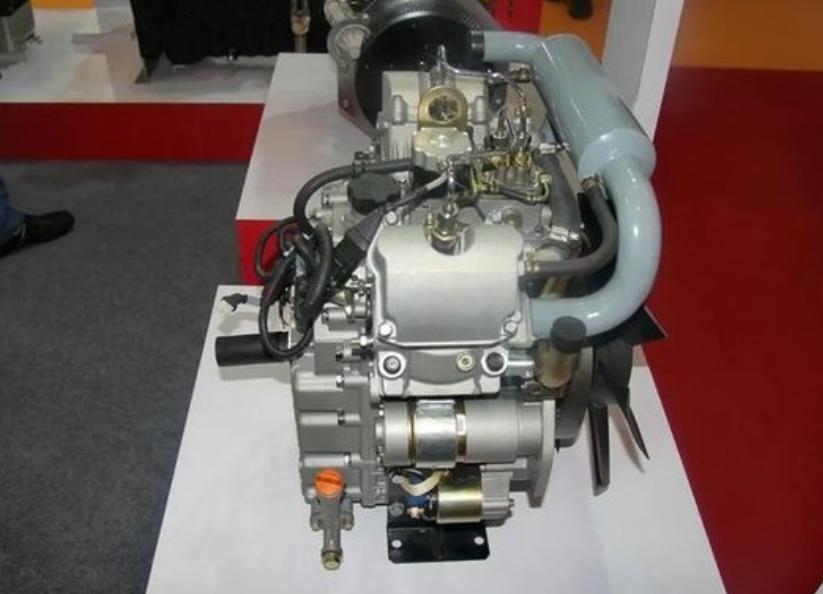
Fiona
This is Fiona. She is the office manager where my daughter works.

She showed up very pregnant one day and introduced herself to everyone.
Then over the weekend she had four babies.
When the girls came to work Monday morning she led them to where she had had her babies and asked for some help.
The girls quickly took her and the babies in and helped Fiona start raising them.

When they were old enough all four were adopted into good forever homes. Now Fiona is enjoying her best life indoors at the company where everyone knows her story and loves her.

Ukrainian “Kill List” hosted on NATO servers!!

A web site that posts images and info of people OPPOSED to Ukraine in its fight with Russia, by strange coincidence seems to see some of the people whose photos and info they publish, GET KILLED. Now, we find, that web site . . . is hosted on (derives content from ) NATO servers!
Ok, so for those of you that can verify, I suggest the following:
Go to this Ukrainian website page, showing a composite image of many on the hit list: [link to myrotvorets.center (secure)]. If you examine the page source, depending on browser do something like = -> "Developer" -> "Page Source" . See that the image comes from here: [link to psb4ukr.natocdn.net (secure)] . Now, unix people can use a command called 'dig'. Type: dig natocdn.net . what comes back: ;; ANSWER SECTION: natocdn.net. 300 IN A 152.152.31.120 . So then we see whois this IP address, by typing the command 'whois': whois 152.152.31.120 .
What comes back:
=== inetnum: 152.152.0.0 - 152.152.255.255 netname: NATO-HQ org: ORG-NHQ1-RIPE descr: NATO Headquarters descr: Leopold III ln descr: 1110 Brussels country: BE person: Eddy Vanderstraeten address: NATO Headquarters address: 1110 Brussels address: BE phone: +32 2 7075150 nic-hdl: EV431-RIPE mnt-by: RIPE-ERX-MNT created: 2004-02-02T14:54:06Z last-modified: 2004-02-02T14:54:06Z source: RIPE # Filtered
Engines
On September 16, 2020, the development of internal combustion engines in the world ushered in a historic new breakthrough. Weichai Group officially released the world’s first commercial diesel engine with a thermal efficiency exceeding 50% in Jinan, Shandong, China.

Methanol
China has mature technologies in coal-to-methanol production. Methanol can be used as motor fuel directly and to produce synthetic gasoline.
On December 30, 2008, the Shenhua Ordos Coal Direct Liquefaction Demonstration Project was officially put into operation, which became the world’s first million-ton industrial demonstration project built with modern coal direct liquefaction technology.
The total construction scale of the project is 5 million tons of oil products per year, and the conversion rate is as high as 60% to 70%.
At the same time, the refined oil produced by direct liquefaction has the characteristics of low sulfur and nitrogen content, large specific gravity and low freezing point.
On December 28, 2016, the world’s largest single set of 4 million tons/year indirect coal liquefaction demonstration project was completed and put into operation.
China has formed a sole world class complete system in the field of direct and indirect coal-to-liquid chemical industry in megaton scale.
Coal-fired power generation is no longer the main source of air pollutants in China. By the end of 2021, there are 160 million-kilowatt ultra-supercritical coal-fired power generating units in operation in China, more than the sum of other countries.
China, the only country in the world, has mastered UHV technology, and the UHV technical standards of China are also the only technical standards in the world.
After 10 years of development and construction, China has completed 13 large-scale UHV transmission networks, with 5,000 kilometers of lines spanning the whole of China, with an annual transmission capacity of 98.6 million kilowatts. The smart grid technology of China also leads the world.
Deadly STINGER Anti-Aircraft Missile Seized by German Police for Sale on black Market; came from Ukraine!
Police in Bremen, Germany have arrested at least one man in possession of a fully operational U.S. “Stinger” anti-aircraft system – originally sent to Ukraine as military aid – which ended up on the black market. This is one of the most deadly, accurate, and fully portable systems in the world!
A Stinger missile, fired from the shoulder of any single man, can hit and destroy an aircraft flying up to 15,000 feet, and up to five miles away!
It has been previously reported that an enormous amount of weapons being sent to Ukraine by the United States have been stolen by Ukrainians, and then offered for sale on the black market. In fact, it is now an open secret that only about thirty percent (30%) of the weapons sent, actually make it to the Ukraine military!
One such batch of weapons included U.S. “Stinger” shoulder-fired, anti-aircraft missile launchers.
The image above is the actual Stinger missile seized by German Police. It was fully operational and could have downed a plane. The man who had it, was selling it on the black market.
Hal Turner Remarks
Police in Germany have been ordered to keep quiet about this, due to the embarrassing situation for the US and NATO, that our own weapons are being stolen by Ukraine and sold on the black market.
They were also ordered to keep this quiet “so as not to cause public panic” that military-grade weapons systems are now being sold to anyone who has enough cash, inside Germany, where such systems might actually be used.
Air-cooled two-dimensional active phased array fire control radar
An oldie, but goodie. For those of you who are still convinced that China uses 1960s radar technology. -MM
In May 2017, the world’s first air-cooled two-dimensional active phased array fire control radar was successfully developed in China.
This type of radar uses high-efficiency air-cooled heat dissipation technology to successfully solve the worldwide problem that the traditional PD radar fighter cannot directly upgrade the active phased array radar in-situ.
In-situ direct replacement under any changed conditions can greatly reduce the replacement cost, shorten the replacement cycle, and greatly improve the comprehensive combat effectiveness of the aircraft.
The successful development of the radar is of great significance for enhancing the national defense strength and improving the international competitiveness of airborne radars in the aviation industry of China.
It has broad application prospects at home and abroad and is expected to produce good economic benefits.
UK Banks Changing Account Terms; Can Limit Withdrawals
This is known as "preemptive actions" . -MM
Banks in the United Kingdom have begun changing the terms of Bank Accounts to LIMIT or REFUSE withdrawals that “may affect their financial stability.”
Account holders at Yorkshire Bank, for instance, received notification that the Bank changed account terms to say “We have the right to restrict transactions where we reasonably believe our financial stability may be at risk, such as actual or potential abnormal levels of withdrawals.”
Put simply, if a whole slew of depositors start losing faith in the bank, and start taking THEIR money out, then the bank gives itself the right to prevent YOU from taking YOUR money out.
Changes like this don’t happen by chance or for no reason. It seems logical to many account holders that the reason the banks are doing this is that they fear something in the future will cause people to come withdraw their money.
Bank account holders in the UK should look carefully at their account terms to see what rights the banks give themselves. It may actually be safer for people to keep a significant portion of money OUT of banks. This way, YOU can get to it no matter what happens to THEM.
The Wallflowers – One Headlight (Official Music Video)
How much does the CCP pay people to comment on Quora?
I assume that you are asking because you would like to earn some money by commenting on Quora.
I am not aware of anyone on Quora who is being paid to post comments for China on Quora and there is no news about China having a budget for propaganda through news agencies or individuals.
But the United States has one.
A huge budget.
An example is the following:

So if your intention for asking is to get some funds through commenting on Quora or writing articles in any publication, you should contact the US government about writing articles against China.
The world’s first intelligent, interconnected CNC system
The “i5” CNC system is the world’s first intelligent, interconnected CNC system. The first five-axis machine tool VMC0656e equipped with i5 system was made and its mass production began in 2015.
The original address authentication of IPv6 (Internet Protocol Version 6) was pioneered, which laid the foundation for the security of the next generation Internet. Chinese scientists have also proposed the transitional technical scheme of “IPv6 over IPv4” for the first time, which provides an important solution for the transition between the first-generation Internet and the second-generation Internet.
Why shouldn’t the world reject the US?
The world is starting to reject USA…
China and Russia are forming all kinds of economic and security alliances that unite the world. BRI. BRICS. RCEP. SCO. And so on. USA is left out in the cold.
Most of the world’s nations have refused to follow US sanctions against Russia. Even some EU countries have broken with US sanctions to trade with Russia!
- OPEC refused to increase oil production despite America’s pleas.
- BRICS is creating an alternative global reserve currency to the US Dollar. No more sanctions!
- SE Asian countries refused to join a US coalition against China.
- South Korean officials refused to meet with Pelosi when she visited!
- USA is losing diplomatic influence around the world.
Except for the Western hegemonic powers, nobody wants to risk going to war with China. It would be an economic, military, social and catastrophic bloodbath.
China and Russia are standing up to USA militarily.
They’re pushing back against US bullying.
Depeche Mode – Enjoy The Silence (Live on Letterman)
Why is the Biden administration trying to use more sanctions and spread propaganda to compete with China than building, developing, and trading?
Hasn’t it occurred to you that when a person reverts to bad mouthing another to try to get ahead cannot be very good at what ever it is doing.
The US simply cannot develop its own nation, helped its own people and retrain and develop industry because it’s political and economic structures are obsolete and crumbling.
Hence the only thing left to do if you cannot do is to prevent others from doing. It’s no different from a despicable office worker, to a bully in school picking on nerds, to a dysfunctional nation.
Sanctions and fabrication simply don’t work in 2022, it may work up to late 1900s as China or other nations simply cut out the US further. The US will implode faster and deteriorate speedily. But it prefers to commit suicide economically go right ahead.
I feel sorry for Americans. Leaders do things that benefit their politics not for their people and their nation. So the people will suffer higher inflation, higher unemployment, lower standard of living.
The world’s longest boom pump truck
More Chinese innovation. This truck is common all over China. It's been mass produced and is used everywhere. -MM
The self-developed 86-meter pump truck, the world’s longest boom pump truck, was successfully rolled off the production line in 2013.

The world’s largest die forging hydraulic press, 80,000-ton hydraulic press, is 27 meters above ground and 15 meters underground, with a total height of 42 meters and a total equipment weight of 22,000 tons. It is one of the important contributors to the successful test flight of the domestic large aircraft C919 of China.
China has a complete industrial chain of gantry cranes, and its products are more affordable and world’s top level highest quality than all the second best and have unparalleled advantages. In the world’s large-scale gantry crane market, Chinese products have a monopoly position.
Why does raw milk taste different from pasteurized milk?
This is (to my mind) a very important question, and well worth taking some time with. I have been personally involved in this topic for the past 8 years.
My wife is a dairy farmer, on a small island in Scotland, and like most dairy farmers we know, we drink our milk raw every day, copiously. It has a wonderful, rich and deeply satisfying taste. My wife is 53 and has drunk raw milk pretty much daily all her life. However, we know the hygiene of our cows and of our milking process, and we know our herd is free of TB and MAP. I am NOT a raw milk advocate for the simple reason that these health and safety issues are tough, and serious. So I would not drink the raw milk from another farmer’s cows. There’s simply too much risk.
First of all, there is the hygiene question. If the cows have laid their teats down in some of their dung overnight, has this been properly washed off prior to the milking? If not, there is a risk of E. coli contamination. We always take great care to wash the udders carefully each time the cows come in for milking.
Then there is Bovine TB. This is pretty common in the UK among herds of cows, especially in England, where the government have a controversial policy of culling badgers to try to control it. Before WWI it was pretty common to get tuberculosis from drinking raw milk, and many thousands of people died from it each year. It is a risk not to be sneered at..!
And most likely you have never heard of Mycobacterium avium subspecies paratuberculosis, normally abbreviated to MAP. It is a bacteria which causes Johnes Disease in cows, and it is far more common than Bovine TB. It is a wasting disease of the gut, and its symptoms are identical to those of Crohn’s Disease in humans. And while we KNOW that MAP causes Johnes Disease in cows, we cannot know for certain if it also causes Crohn’s Disease in people. Why? Because of the ethical challenges of any study. You would need to take a large group of healthy people, divide it into two, and via blind process, inoculate one group with MAP, and then see what happens to them in the years that follow. Not something anyone would contemplate doing, for obvious reasons..!
But this is a bit ironic. Studies have found that in the UK approximately 10% of supermarket milk is contaminated with “viable” quantities of MAP bacterium. That is to say, contaminated with sufficient MAP to pose a likely health risk. And so, due to the ethical problems surrounding any study that could determine if MAP causes Crohn’s Disease in humans, no such study is ever done. Instead the entire UK population are exposed to the health risk of milk contaminated with viable levels of MAP.
Back to the pasteurisation question.
Circa 1906 some very clever Public Health officials in Massachusetts put a great deal of time and effort into finding a protocol for pasteurising milk effectively without losing the rich wonderful flavour of the milk when raw. This was because at that time thousands of people in Massachusetts alone were dying from TB each year, from the contaminated milk supply. But the most common ways to pasteurise milk involved bringing it close to a boil, and this ruined the taste. So the public avoided buying pasteurised milk, as it did not taste good.
What these Public Health officials arrived at was a protocol that came to be more or less universally adopted by the time WWII came along. And with the development of home refrigerators after WWII, this protocol became even more widespread. It is really very simple: heat the milk to 63˚C (145˚F) and hold it in the heating tank at or just above that temperature for 30 minutes. Technically, the milk needs to be above 62.7˚C in order to kill off the pathogens. This is actually a pretty low temperature, and must be maintained for the full 30 minutes. But it has the great merit that it has a minimal impact on the flavour of the milk.
Milk is a wondrous and very complex substance, with hundreds of different compounds in it. And of course, these are altered more and more if the milk gets heated. The brilliance of the research back in 1906 was to discover that there was a temperature (63˚C) at which pathogens were very effectively killed off, yet at this temperature the taste was not significantly altered.
As soon as you reach 64.5˚C then very substantial changes occur in the milk, and the proteins in particular become more and more “denatured”. In common parlance, the milk becomes “sticky”. We notice this in our production room: if someone forgets to turn off the heating elements of our pasteurising vessel at the correct moment, the temperature with creep up inexorably beyond our target of 63˚C. And if it hits 64.5˚C or above, then we find that cleaning the vessel becomes a big headache: all the inside of the vessel is now coated in sticky milk, and must be scrubbed by hand. Normally, we only have to do a simple chemical rinse with something called D90, in hot water, to clean the tank. But even the venerable D90 cannot cope with milk heated to 64.5˚C. So we pay attention, to avoid that happening..!
We bottle our pasteurised milk, and send it out to shops across Scotland. When we started our pasteurising process 7 years ago, it was very difficult to find any information regarding the pros and cons of the two main protocols that exist. But we found that heating our milk to just 63˚C meant it still tasted wonderful, and so we stuck with that approach. For a time we were the only dairy farm in Scotland that were doing this. 30 minutes is a long time to wait for your milk.
So… the other protocol has become pretty universal in Europe and North America in the past 40 to 50 years. It seems that researchers in North America in the 1970’s found that you could kill off TB and E. coli bacterium in milk in just 15 seconds, if you heated the milk to 73˚C (163˚F). That’s 120 times faster than the other protocol. If you want to pasteurise 100,000 litres of milk each day, and someone says to you Hey, you can do that 120 times quicker, you will listen to them..! And listen they did. Nearly all milk in North America and Europe is pasteurised with this 73˚C protocol. In the UK the industry switched over if about 1980. It was all so tempting, the idea of the huge cost-savings, at a time when of course the supermarkets were putting great price pressure on the dairy processing industry.
The drawback? Well, there are two big problems with this faster protocol.
- It ruins the rich wonderful taste of the milk. In the years since the change in the USA, per capita consumption of milk has declined by 40%. No wonder. Milk that has been heated to 73˚C does not have a lovely rich flavour any longer. It is really only fit for adding to coffee or tea, and maybe pouring onto breakfast cereals.
- The MAP bacterium happens to be somewhat resistant to being killed off by short spikes in the milk temperature. That is unlike the Bovine TB bacteria, or E. coli, for which the 15 seconds at 73˚C is very effective. So they have tried 20 seconds, and 25 seconds. But to no avail. If you have milk contaminated with MAP, then the old protocol of 63˚C for 30 minutes is fully 10 times more effective at killing it off. If the milk is held at 63˚C for 35 minutes, it is a thousand times more effective than 73˚C for 15 seconds. So the old protocol was far more effective at stopping MAP being a problem in the milk supply.
But back in the 1970’s the researchers weren’t looking at MAP. Their only concerns were with Bovine TB and E. coli. It is only in the past 20 years, as more and more people have developed Crohn’s disease, that the dairy processing industry have (very quietly, don’t want to alarm anyone…) spent a great deal of time and money trying to find an effective solution to the MAP problem, that does not involve scrapping all the millions of $ of machinery they have put in place for the 73˚C / 15 second protocol.
My understanding is that in Australia the milk is pasteurised with another protocol, at 81.6˚C for 2 seconds.
From our experience at our farm, I can say that milk never tastes as good as it does when it is raw. It is truly a wonder food, rich and deeply satisfying. But milk is a perfect medium for bacterial growth. Hence the need to pasteurise. But as milk gets heated up, the hundreds of compounds in it begin altering. Heat it up higher, and more of those compounds are altered, or altered even more. And so there is a trade-off: safety vs taste.
But the shocking discovery for me of these past 7 years has been to discover that the old protocol, of heating milk to the minimum temperature required to kill off the pathogens (63˚C), and holding it at that temperature for 30 minutes, produces a pasteurised milk that is far safer than the milk that is heated briefly to 73˚C. Milk heated to 63˚C tastes very nearly the same as it is when raw. If the dairy industry wanted to provide milk that is both the safest it can create, and at the same time having a rich wonderful flavour, then they would use the old, slower protocol.
But sadly the industry is driven far more by the desire to cut costs, and so an inferior, less safe product is provided to the public.
Over 99% of milk these days in the UK these days is pasteurised using the 73˚C protocol.
Can I grow so much food that I never have to buy food again?
You? I don’t know you, but statistically I’d say probably not.
I have a small garden. It’s 15 feet wide by 30 feet long, in the middle of a pasture with excellent sunlight from east to west.

I moved it into raised beds because I got tired of fighting the pasture.

This year we’re growing jalapenos, cherry and beefsteak tomatoes, cucumbers, zucchini, romaine, spinach, radishes, and a couple kinds of green onions. Plus I also keep a bunch of herbs in big pots; rosemary, sage, oregano, cilantro, thyme, parsley, basil, and mint. I’ve done dill and tarragon in the past but we didn’t use it enough to keep growing it. We pretty much never buy herbs except occasional bay leaf and other stuff I can’t grow conveniently.

Basil
There is no way I could feed myself with that garden. First it’s seasonal, so there would be nothing in winter unless I canned and preserved, and even then there wouldn’t be enough. I do pickle cucumbers and peppers when I get a big enough harvest.
Pepper harvest from last year. Top to bottom: jalapenos, bananas, cuban sweet, and fresno’s.

Second, there’s a serious lack of filling carbs in my garden. Tomatoes and cucumbers are great, especially fresh, but you can’t live on them. Maybe if I planted another 15×30 garden with nothing but potatoes and onions, and another 15×30 with leafy greens, maybe some carrots, something like that. Replace the greens in my current garden with green beans or peas or something. Then maybe. If I also had chickens. Not nearly enough proteins in my garden to survive, but a dozen chickens means a few eggs every day and a couple chickens in the pot per year, and that might get me by.
Except there are two more people in my household. So triple all that.
And then comes the work. I weed and water and check all the plants for signs of problems every day. It’s maybe a half hour a day, but if I had 2 more gardens for all the carbs and roughage, it would take 3 times as long. And times 3 again because I’m feeding 3 people, so more like 4–5 hours a day. Double that for planting season, and the underground vegetables would have a harvest season, so spring and fall would be a full work day for at least several weeks. And you’d need a good-sized root cellar, or multiple refrigerators to keep them.
You pretty much have to do something with your harvest within a few days, fresh fruits and vegetables don’t keep if they aren’t treated with preservatives (like industrially farmed food is), so expect full days of canning, pickling, and other long storage tasks for the week after harvest.
And now you’re talking about a full-time job. Yeah, you’ll have days when you only have to work 3–4 hours a day, but you’ll also have days that are busy 8–10 hours, and then you’ll spend another several hours at night in the kitchen preserving food.
This is why they had big families back in the day. Kids are laborers who work for food and shelter, and while the husband and sons are out harvesting and caring for livestock, the wife and daughters are in the kitchen preserving and planning for winter. The traditional family roles didn’t happen by accident.
It’s not just a full-time job, it’s several full-time jobs.
The world’s first marine 3D CNC bending machine
The world’s first marine 3D CNC bending machine of the latest hull panel processing equipment was launched in China in 2010.
It's been in use for over a decade now! -MM
The machine can automatically form the ship plate according to the data of mathematical stakeout and use special calculation and control software.
The system can automatically detect, calculate and control in real time, with learning and intelligent functions; the control panel is graphically displayed, and the user interface is rich, making the operation convenient and intuitive.
By shortening the shipbuilding cycle, improving shipbuilding quality and operating conditions, and reducing labor intensity, the marine 3D CNC bending machine can comprehensively improve the processing efficiency of hull panels by more than ten times, which is conducive to the advancement of shipyards’ digital shipbuilding technology and the competitiveness of shipbuilding production.
In recent years, the heavy equipment in China has become super-large, and the nuclear power, military industry, shipbuilding, construction machinery manufacturing, …, etc. have developed rapidly, and the demand for extra-thick and extra-wide steel plates with a thickness of more than 100-300mm has increased significantly.
At the same time, the development of small commodities, home appliances, automobile markets, and high-speed trains has greatly increased the demand for die steel.
The world’s largest straight-arc super-large wide-thick slab continuous casting machine designed by China Heavy Machinery Research Institute has been successfully tested recently.
These are just some typical examples of how much China is going to be more advanced than the USA technologically. China is no longer the poor and white country it used to be, and it is no longer controlled by others and confined to a small area.
2,600-Year-Old Halloumi Cheese Uncovered in Saqqara, Egypt
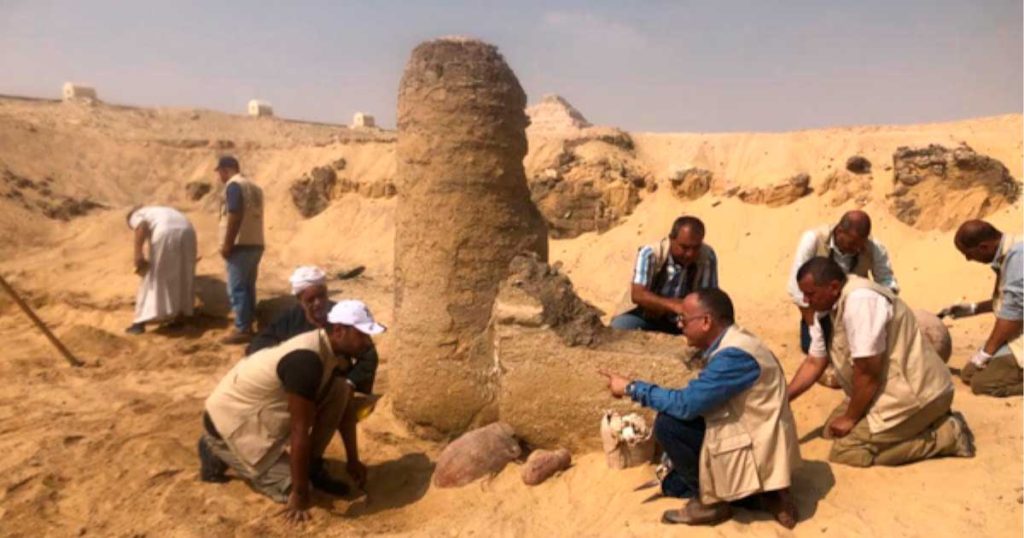
Imagine cheese left out of the fridge for longer than a few hours in a hot, arid climate. You might imagine smelling wet socks and dirty feet. Now, imagine cheese left unattended in some obscure storage for 2,600 years! This was the scene facing archaeologists working in Egypt’s Giza in the Saqqara antiquities area , who stumbled upon blocks of halloumi cheese that had been lying unattended for over two and a half thousand years – what if you got a whiff of that?
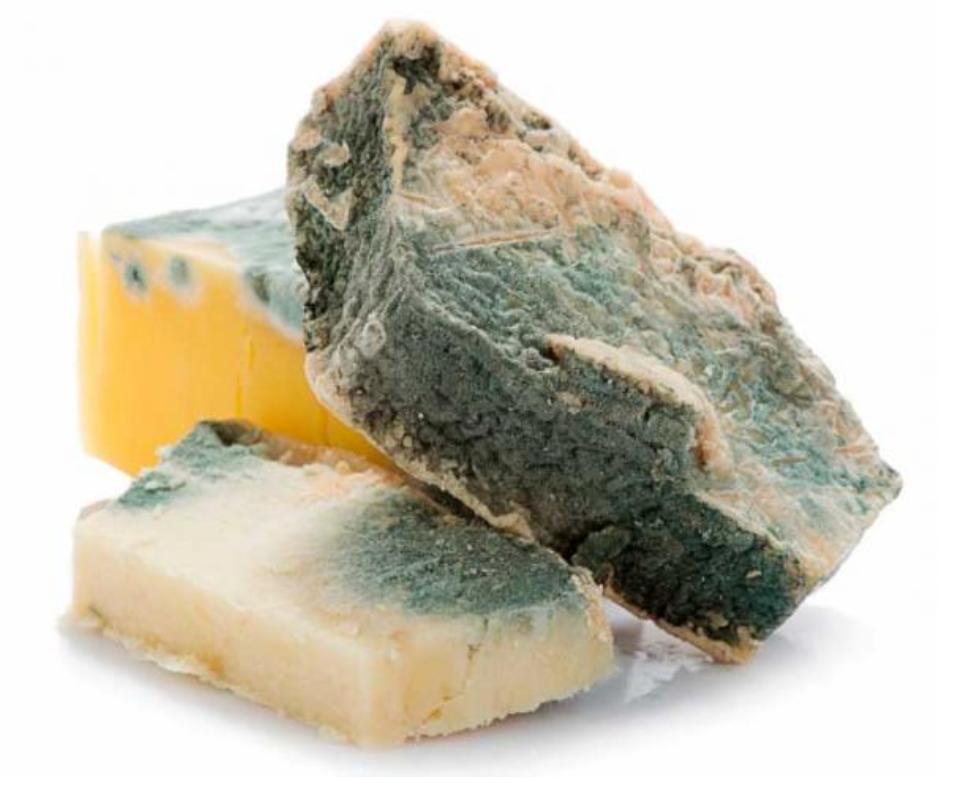
Some people think aged, smelly, moldy cheese is delicious, but ancient Egyptian halloumi?! ( uwimages / Adobe Stock)
What is Halloumi? A Rubbery Cheese with a High Melting Point
Halloumi is a traditional Cypriot cheese made from a mixture of goat, sheep, and sometimes cow’s milk, with a ‘squeaky’ texture. Although it can be eaten raw, with a high melting point, it can be easily grilled and fried, allowing it to be substituted for meat. Its rubbery, semi-hard texture could be compared to mozzarella.
Halloumi became popular in Eastern Mediterranean cultures . The Cypriot Turkish name hellim stems from this source, along with the name of the different modern Egyptian cheese, halumi. Modern day halloumi is made from the cheapest and most widely-available milk in the industrial world, cow’s milk .
The earliest mention of halloumi was recorded in the mid-16th century by Italian visitors to Cyprus. There is no definitive answer as to the origin of the quintessential halloumi recipe. Was it invented in Cyprus, then carried to Lebanon and the Levant area? Did basic cheese making and melting techniques evolve over time in various parts of the eastern Mediterranean? The latest discovery in Egypt is adding to the story.

Halloumi is still enjoyed today, frequently grilled or toasted. ( Ruslan Mitin / Adobe Stock)
Blocks of White Cheese and Halloumi in Saqqara
According to Mostafa Waziri, Secretary-General of the Supreme Council of Egyptian Antiquities, these blocks of molded white cheese were found inside a group of pottery vessels with inscriptions in Demotic, an ancient Egyptian script discovered on the famous Rosetta stone . The cheese was discovered as part of an Egyptian mission at Saqqara, the Ministry of Tourism and Antiquities reports.
The Saqqara area has been a treasure trove of ancient relics. In recent years, more than 100 sarcophagi have been discovered in the necropolis area, becoming the subject of a 2020 documentary on Netflix . The Egyptian Antiquities Mission has been working on the site since 2018, and through five archaeological excavations, have uncovered a hoard of exciting discoveries!

What other incredible discoveries await in the Saqqara necropolis complex? ( travelview / Adobe Stock)
The pots of halloumi have been dated back to the 26th and 27th Egyptian dynasties (roughly 664-404 BC). Ancient white cheese was called haram, which was changed to halloum during Coptic times (from the 3rd to 7th centuries BC).
Moving Forward: What’s Been Happening in Saqqara Archaeology
There are still several unopened vessels, with plans to open the rest and check for more cheese in the pipeline. The first time that ancient Egyptian cheese production was uncovered and identified in 2018, it was even older than the current find, more than 3,200 years old! The subsequent research confirmed that the cheese, found in the Saqqara necropolis , had a really acidic bite. Would you have volunteered to taste it?
Since 2018, “Wahi”, the tomb of a Fifth Dynasty priest, has been discovered, as well as 7 rock tombs, three tombs from the New Kingdom, and four tombs and a façade of a tomb from the Old Kingdom. In addition, more than a thousand faience amulets, dozens of wooden cat statues, and cat and animal mummies were discovered, as reported by See News .
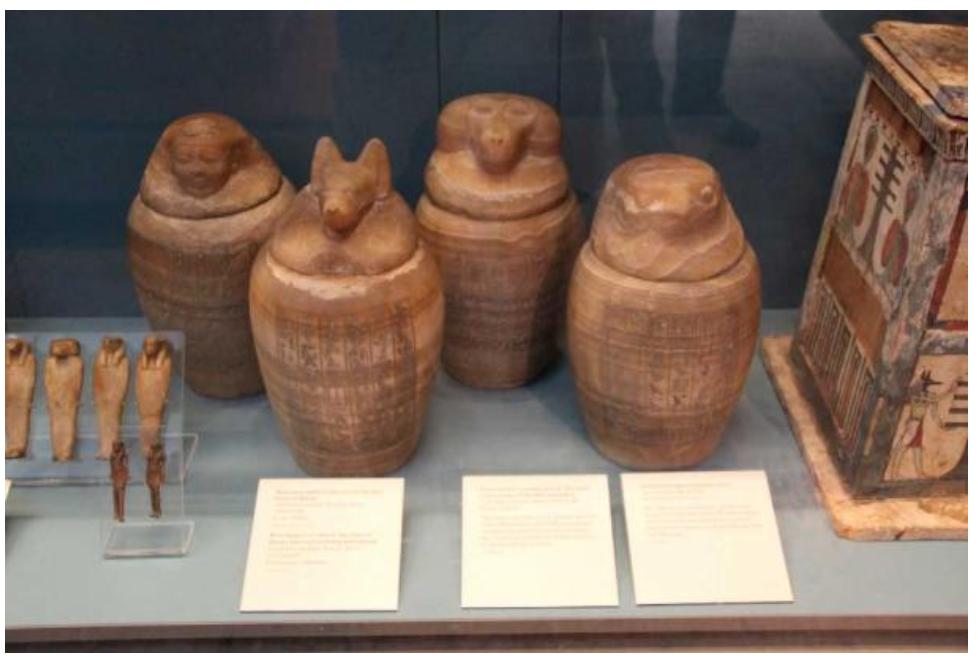
Previous excavations have revealed stunning finds from the 26th and 27th dynasties. ( Public Domain )
The finest of the discoveries was in 2020 , when 100 closed sarcophagi from the Late Era (664-332 BC) were found in pristine condition inside burial wells. This haul also included 40 statues of the god of the Saqqara cemetery, Ptah Suker, with gilded parts, and 20 wooden boxes of Horus.
As recently as May 2022, 250 sarcophagi with well-preserved mummies were found and displayed at Saqqara. Excitement awaits the uncovering of the remaining pots of cheese (presumably) and future excavations at Saqqara!
Onion and Bacon Cheese Sandwiches
Give everyday grilled cheese a boost! Top sandwiches with cooked bacon pieces and sliced onion.

Ingredients
- 4 slices bacon, cut into 1/2-inch pieces
- 1 medium onion, thinly sliced
- 8 slices (3/4 oz each) Cheddar cheese
- 8 slices Vienna bread, 1/2 inch thick


DaTong miners
Let me tell you a story:
In 1986 I went across China, from Beijing to Urumqi, Turpan, and Kashgar. On the way I stopped off in DaTong, on a mission to find an American guy who had moved there (turns out he had already left China— but that’s not relevant to the story).
On the train I met a young PLA soldier who spoke pretty good English. He was traveling home for the first time in over a year, and hadn’t been in contact with his family all that time. It would have been reasonable had he simply said goodbye to me at the station and went on his way, but instead he took me to his home. His mother cried when she saw her son and rushed out to buy meat, fish and other really expensive things. This was a coal mining family, with one room, and everyone heating and sleeping on top of the one kang . (An entire row of these houses shared one outhouse— three brick walls, two bricks on the ground for squatting.)
Of course I was too ignorant to be embarrassed about this lavish treatment.
Then after dinner, instead of sitting around reconnecting with his family, he helped me find people back in town who might help me with my mission.
My opinion of China and the Chinese? After over 30 years I’m still here, and still have a warm feeling when I think about that special dinner with the DaTong coal miners.
INXS – Never Tear Us Apart (Official Music Video)
Cornish Pasty
In a little known factory hidden in the South-West of the UK there is a team of food scientists who have perfected the ideal one-handed meal. Years of research have gone into this, extensive testing has been done by locals and this product is now available.
It can be held in one hand, in fact it has a specially designed grip for ease of use. It contains all the nourishment needed for a meal, has meat, vegetables and potatoes included, and leaves no waste. It has no packaging and can be frozen. Truly a miracle of convenience.
What is this culinary masterpiece? – I give you the Cornish Pasty !

Note how it sits in the hand, look at the wonder of the crimped edging to offer a firm grip. A masterpiece indeed.
It looks good on the inside too,

A complete meal you can hold in one hand and eat while driving a tractor.
Cornwall’s gift to hungry tractor drivers.
Chicken Saltimbocca
Sensational can be simple—for proof, try these prosciutto- and mozzarella-covered chicken cutlets.

Ingredients
- 4 boneless skinless chicken breasts (about 6 oz each)
- 1/3 cup all-purpose flour
- 2 tablespoons grated Parmesan cheese
- 1 teaspoon Italian seasoning
- 1/2 teaspoon salt
- 2 tablespoons olive or vegetable oil
- 4 slices prosciutto (about 3 oz)
- 4 slices (1 oz each) mozzarella cheese
- 1 teaspoon chopped fresh sage leaves
- 3/4 cup Progresso™ chicken broth (from 32-oz carton)
- 1 tablespoon butter or margarine


Israel “IZ” Kamakawiwo’ole’s Iconic Performance at 1996 Na Hoku Hanohano Awards.
Hawaiian music. Love it.
He’s a BIG guy.










